Last Updated on: 17th January 2020, 03:52 pm
The hike from Mestia to Ushguli, which takes four days, is arguably Georgia’s most popular long-distance trek. And it’s easy to see why. The scenery is stunning and the trek doesn’t get too steep. Furthermore, trekking from Mestia to Ushguli offers insight into Georgia’s unique Svaneti region. The area is full of charming Svan towers that you can’t see anywhere else.
While the trek itself is four days, I spent a night in Mestia before starting. And I also stayed in Ushguli upon finishing. My trip to Svaneti lasted nearly a week, and with so much to cover, I’ve divided this guide into two sections.
In Part One we covered the first half of the hike, along with things to do in Mestia. Here in Part Two, we’ll cover days three and four of the hike along with some things worth checking out upon arrival in Ushguli.
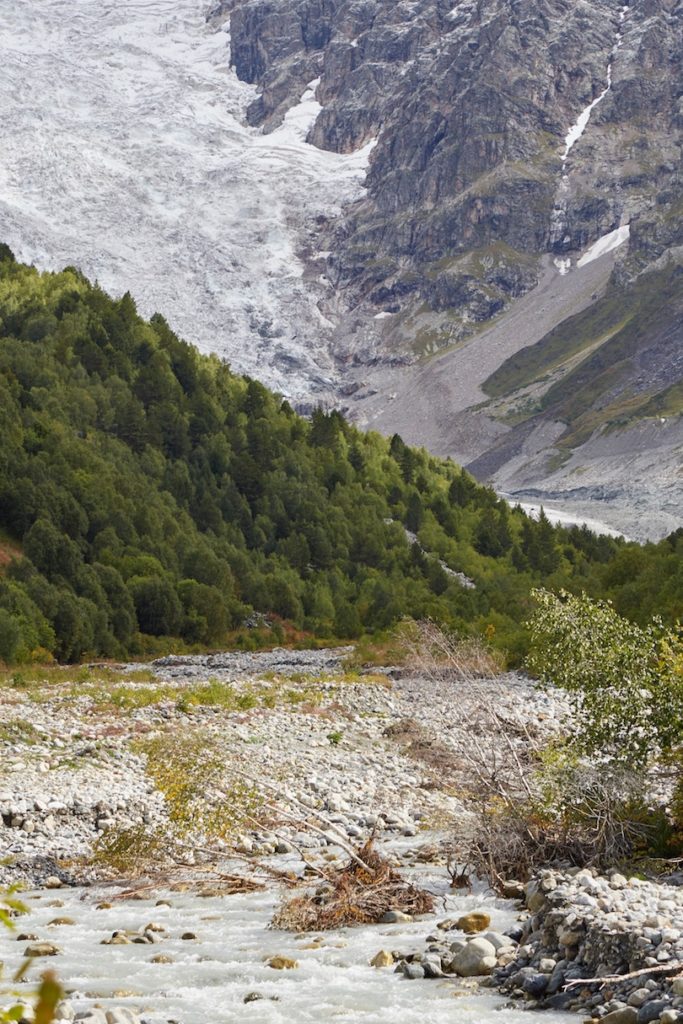
Trekking From Mestia to Ushguli: Essential Info
THE BASICS: The trek lasts 4 days and the total length is around 55 km. The route takes hikers from Mestia to Zhabeshi to Adishi to Iprali to Ushguli. There are other small villages nearby each of these where some people prefer to stay instead. For example, as mentioned down below, I stayed in the village of Lalkhori instead of Iprali.
Overall, the hike isn’t terribly difficult and for the most part, isn’t too steep. The trails are sometimes poorly marked, however, and the correct path isn’t always clear. And if it’s your first time trekking with such a heavy backpack, you might struggle with shoulder or back pain.
ACCOMMODATION: While you can bring a tent and camp if you wish, most people spend each night in a local guesthouse. That makes this trek great for first-time long-distance trekkers.
The guesthouses all offer similar services, and they provide both dinner and breakfast for a reasonable price. While the rate varies slightly from place to place and also from village to village, expect to pay around 40GEL per night including dinner and breakfast.
I’ll be going over the guesthouses I stayed at in each village in the guide below. But should you book in advance or search for a place upon arrival? Read more at the end of the article.
PACKING: The basic things you’ll need are decent shoes, a suitable backpack, sunscreen and a raincoat. Trekking poles are optional but well worth it. Read more packing tips at the end of the article.
USEFUL RESOURCES: By far the most popular article about the trek is the one by Jozef from Caucasus-Trekking.com. His guide is excellent and nearly every trekker I met was using it. However, there were occasional instances where the directions weren’t completely clear. That’s why I’ve provided plenty of pictures to help prevent potential confusion.
I’d also highly recommend downloading his GPX file which marks the entire hiking trail. (If you’re an iPhone user, download an app called ‘GPX Tracker’ first and then try downloading the GPX file). Additionally, be sure to download the Maps.me app on your phone which has many of the hiking trails clearly marked for offline viewing.
ADDITIONAL INFO: Check the very end of the article for more info on transport to Mestia, along with more comprehensive packing and accommodation tips.
Day 3: From Adishi to Iprali (Lalkhori)
At 18.7 km long, the third day of the hike is the longest of the four. And with a total climb of around 860 m, it’s also one of the steepest. Furthermore, as you’ll read shortly, the hike involves crossing a river that can only be done on horseback or by walking through the ice-cold water.
But on the plus side, the third day offers some of the most amazing views you’ll see during the entire trek.
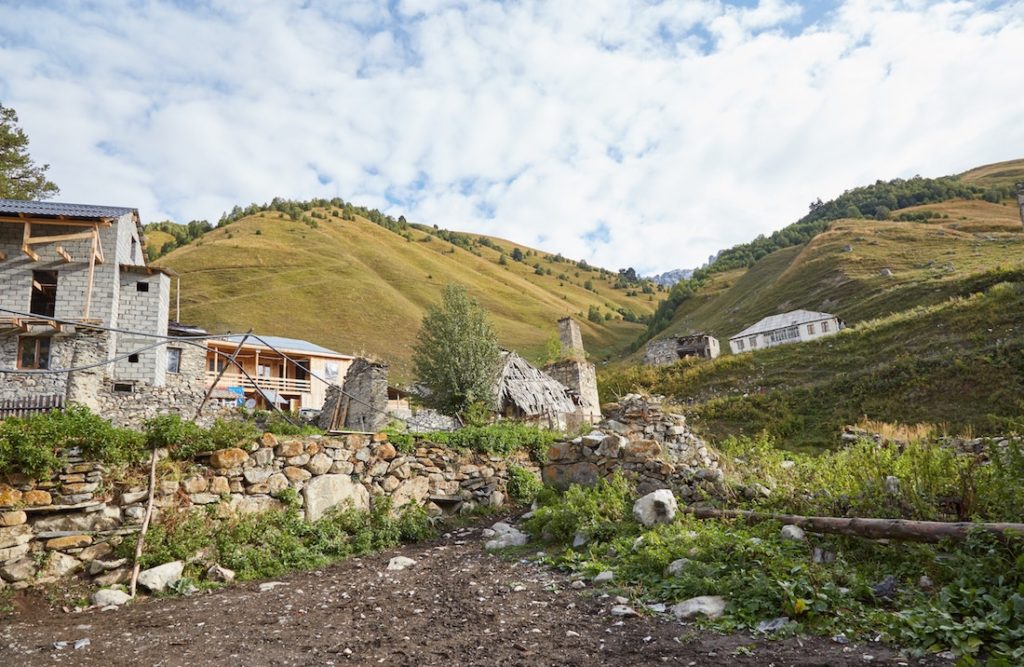

After breakfast, I left Panorama Guesthouse at around 8:30 in the morning and made my way to the trail. For the first hour or so, all trekkers need to do is simply head east.
The trail is pretty straightforward here, but I kept finding myself turning around to take in the picturesque views of Adishi in the distance.
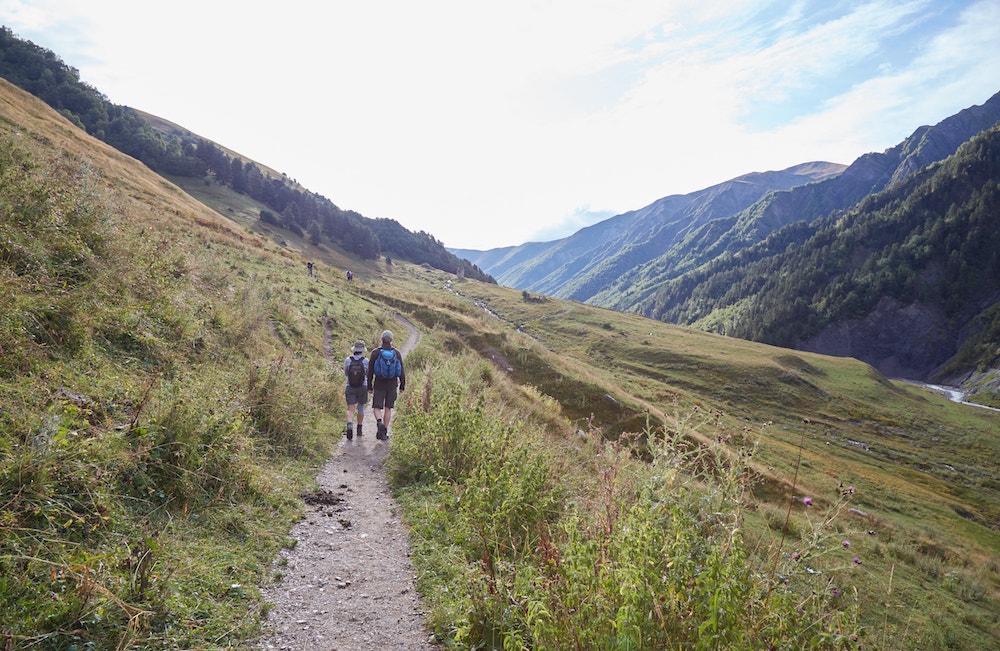




There aren’t too many landmarks of note in this early portion of the hike, aside from a ruined tower to your left. Later on, you’ll have to walk over some loose and rickety pieces of woods to make it across a stream. No, this is not yet the hike’s infamous river crossing!

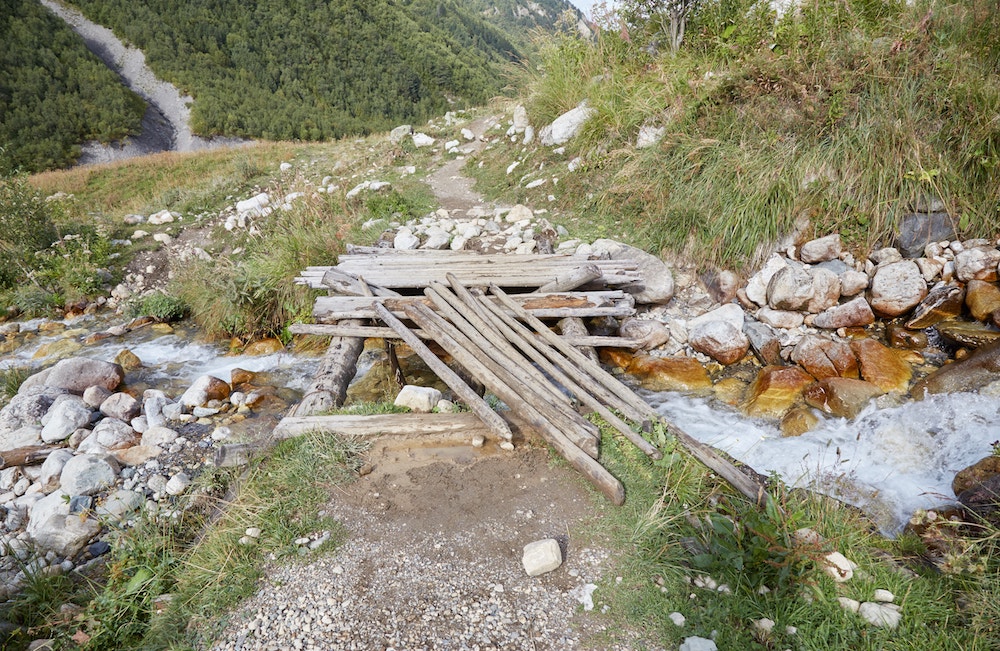
Eventually, you’ll get a glimpse of some snowcapped mountains in the distance, and this point you’ll know that you’re fairly close to the Adishchala River. It’s good to get here relatively early in the morning when the water levels are relatively low.
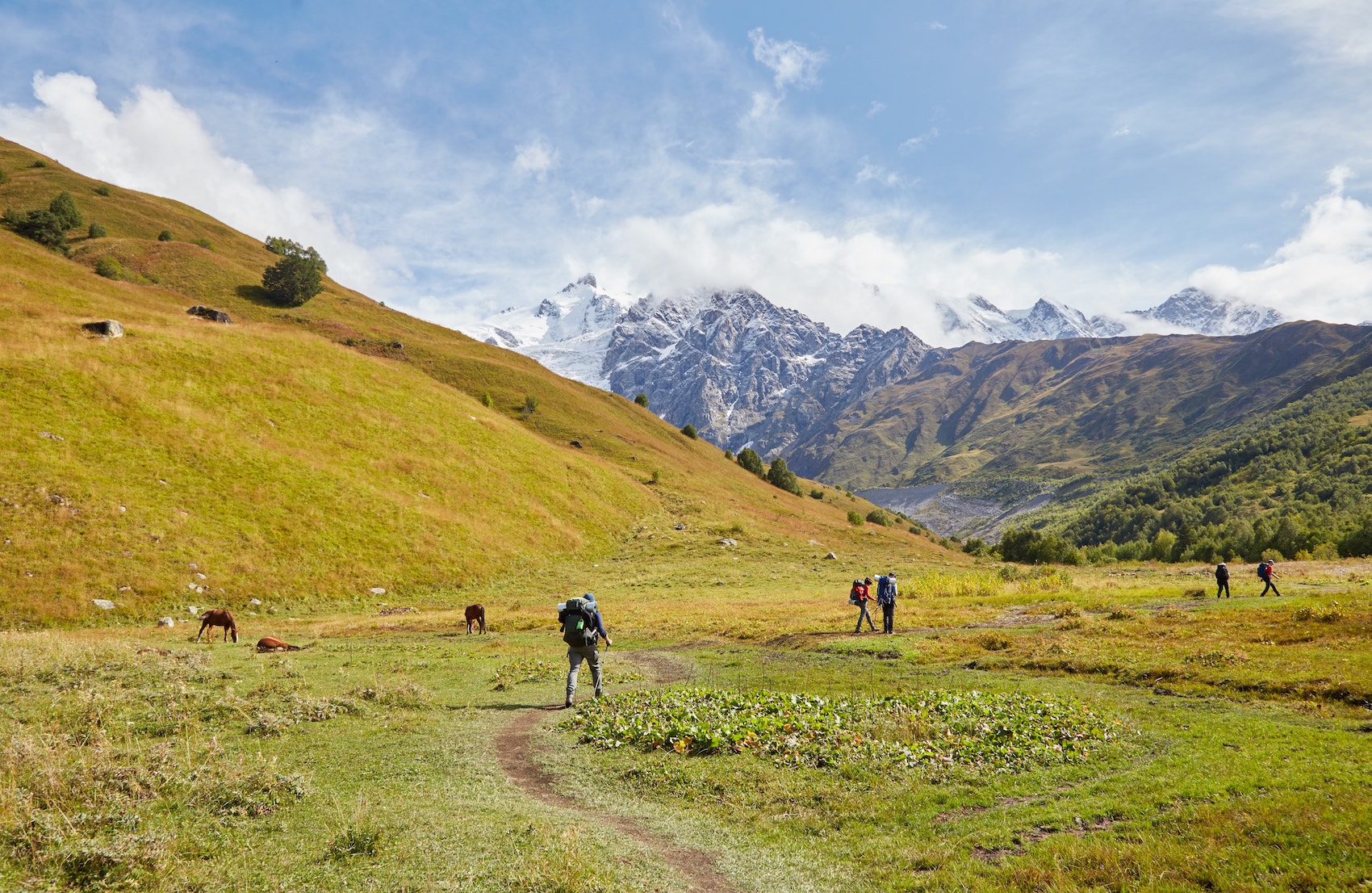
You have two options when it comes to getting across the Adishchala River: forge it or hire a horse to walk you to the other side. The problem many people have with the latter option is that the horse owners charge an absurd 20 GEL for the 10-second ride.
If you want to forge it, it’s best to walk further upstream where the water is more shallow. The water will come up to around your knees, so have the proper clothes on for this, along with some hiking sandals. Furthermore, make sure all your valuables are protected in a dry bag just in case.
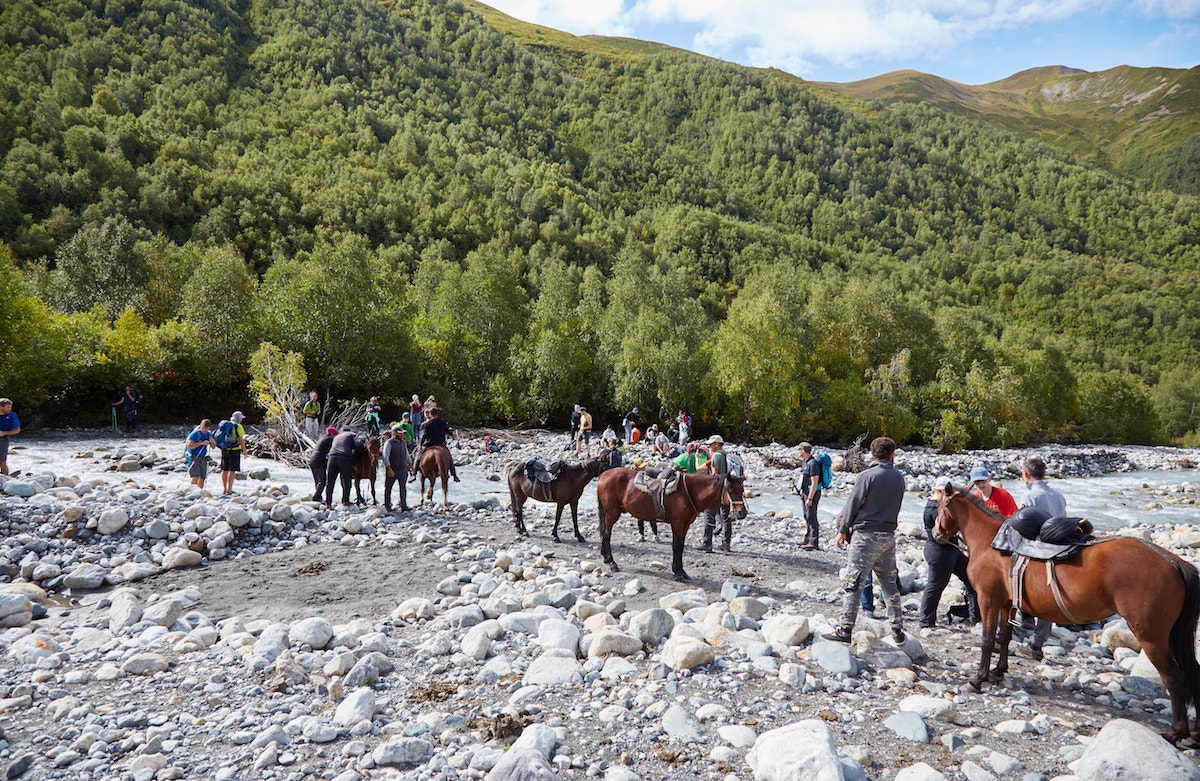
As I was traveling with my camera and lens, opting for the horse was a no-brainer for me. While I wasn’t happy about shelling out 20 GEL for such a short ride, it’s certainly cheaper than travel insurance!
Over the past several years of traveling, all the money I’ve saved by NOT taking out insurance for my camera has added up to more than the cost of buying brand new stuff. So in rare situations like these, I don’t think twice about paying a bit extra to protect my belongings.

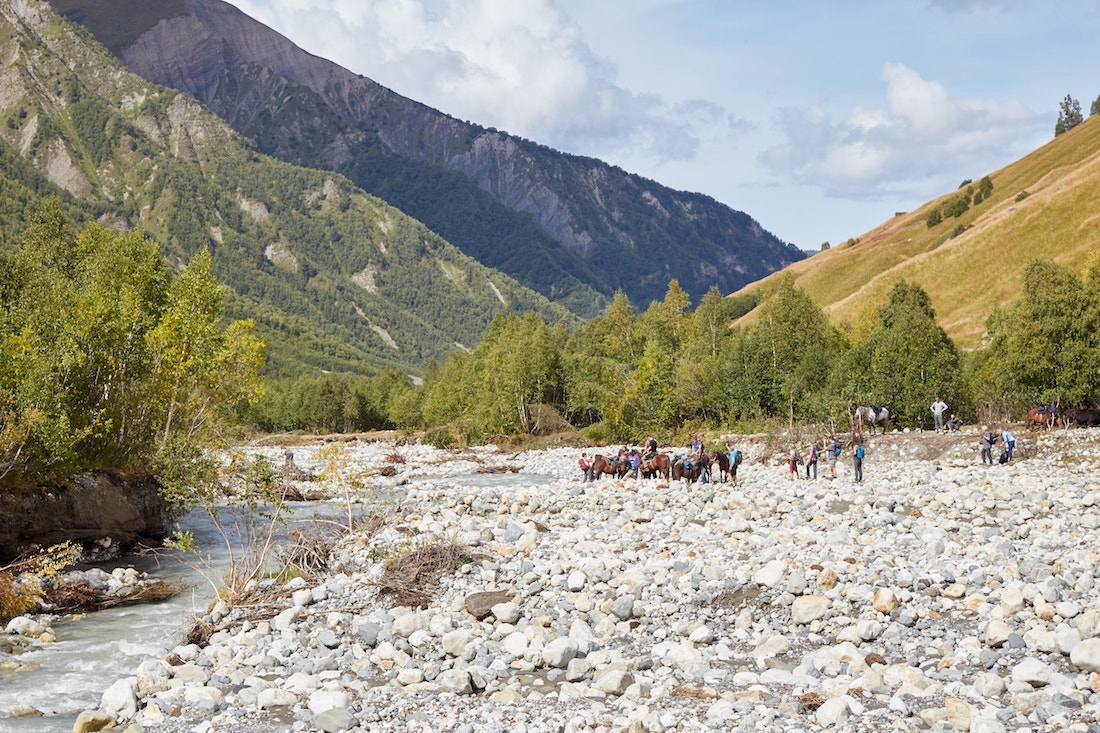
Once on the other side of the river, the most difficult, yet also most scenic, part of the hike begins. The correct path is slightly obscured by some bushes, but it’s not incredibly difficult to find. From the very beginning, you should find yourself walking uphill.
The ascent here is relatively steep, and for awhile you’ll have to walk up a narrow and muddy trail that will likely have numerous puddles. Be sure to watch your step.




Eventually, you’ll reach a flat area that offers an excellent view of the Adishi Glacier. This is a good place to stop and rest for a bit. By now, your ascent is around maybe one third over. Also note that this won’t be your last opportunity to appreciate the glacier view.
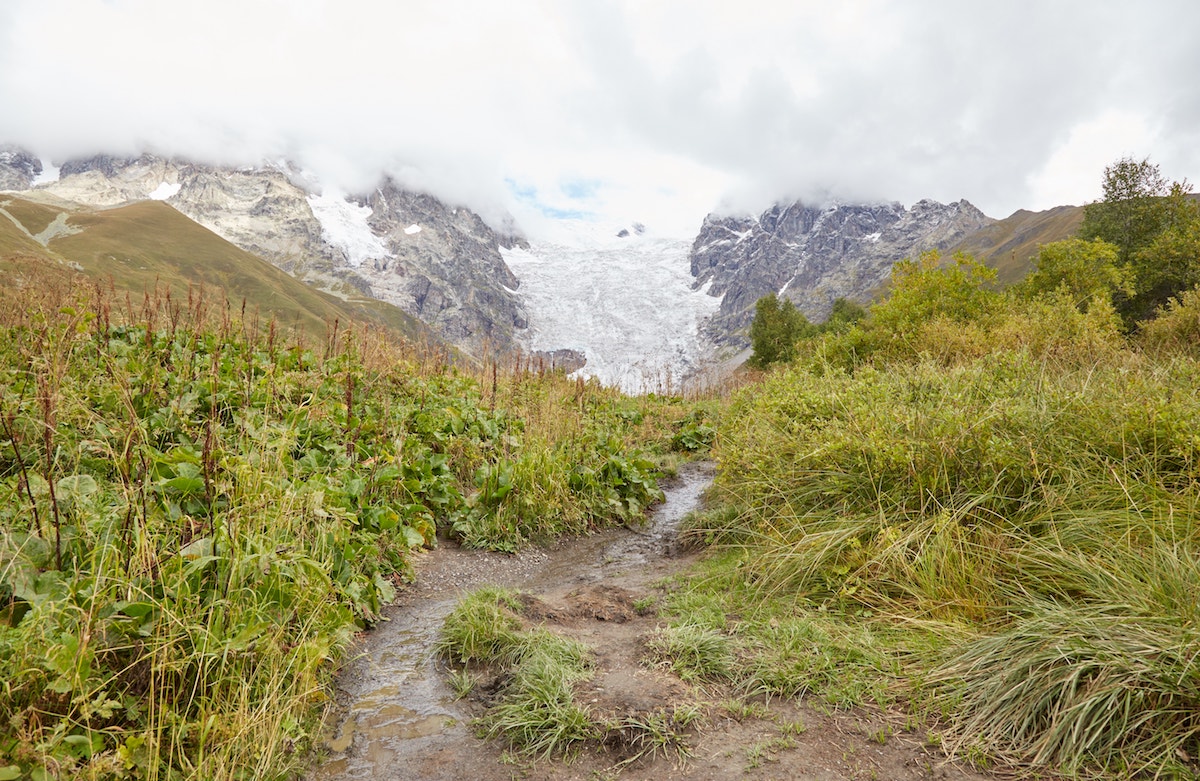

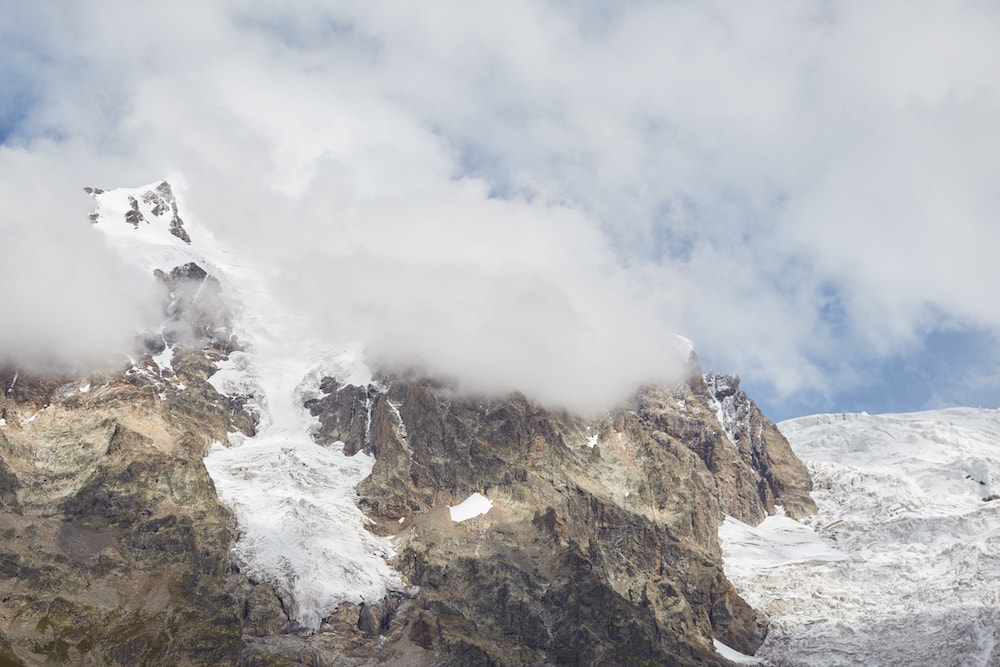
Back on the trail, you’ll make it out of the foliage at some point. The trail doesn’t get any easier here, but you can enjoy clear views of both the river and the glacier.



And finally, after a few hours into the overall hike, you’ll make it to the highest point of the day. It’s called the Chkhunderi Pass and stands at an elevation of over 2600 meters.
While you have the chance to immediately start your descent down the opposite side, there’s a little side hike that’s well worth it if it’s not raining.
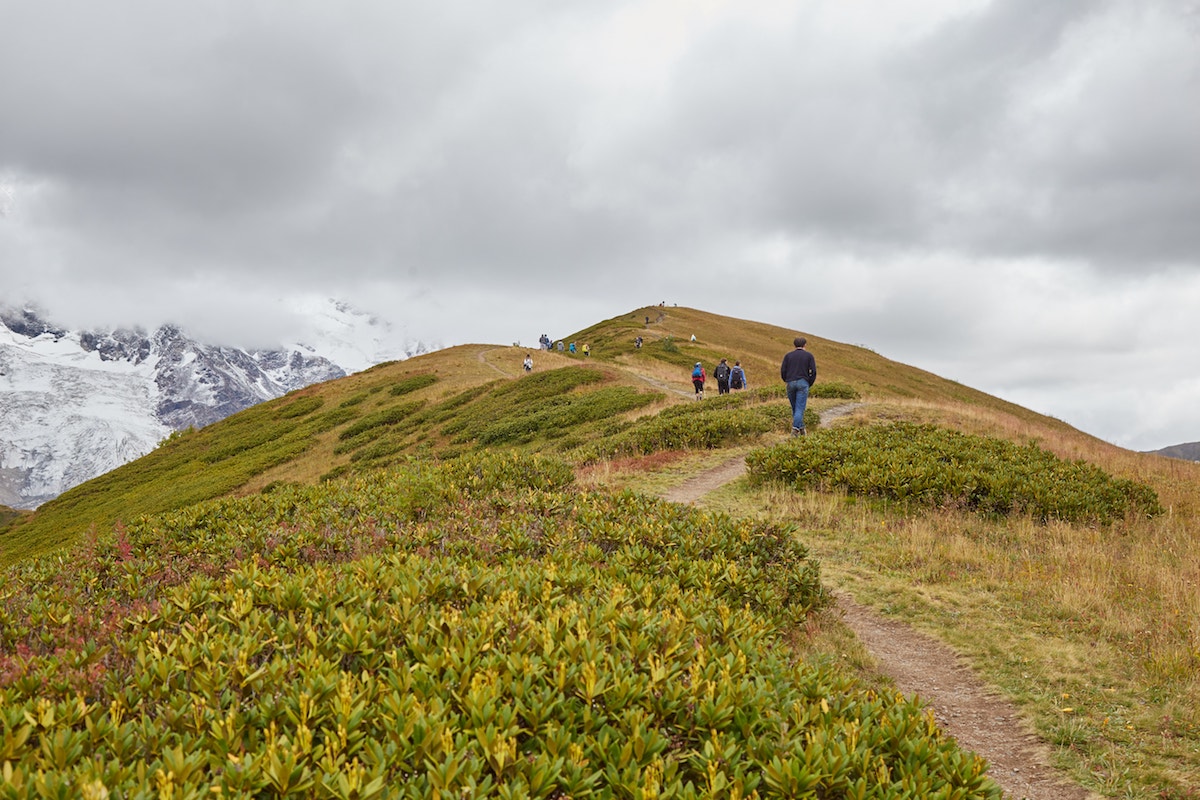

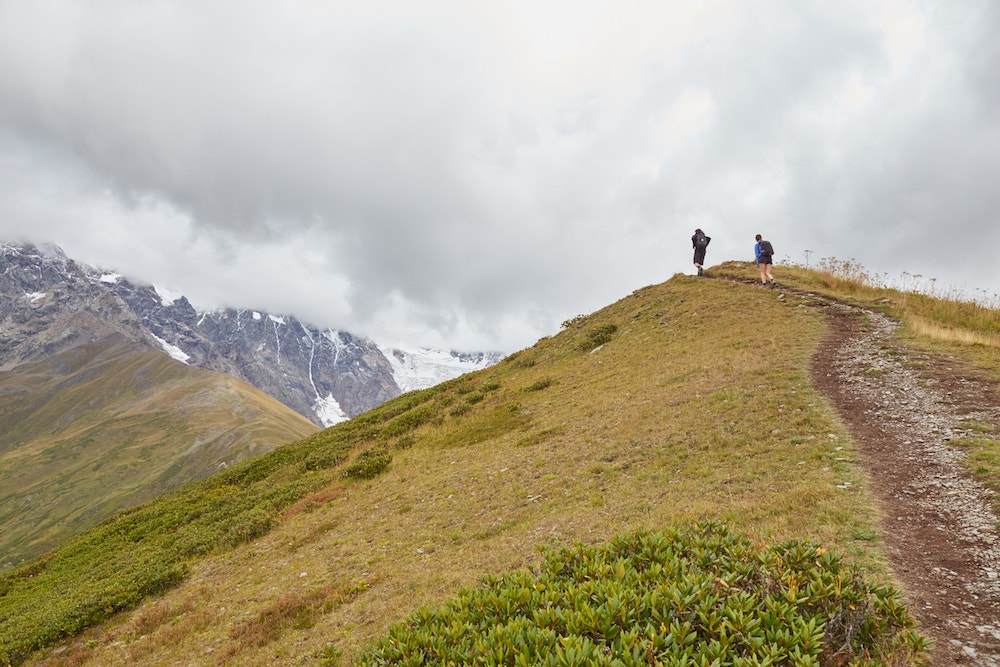
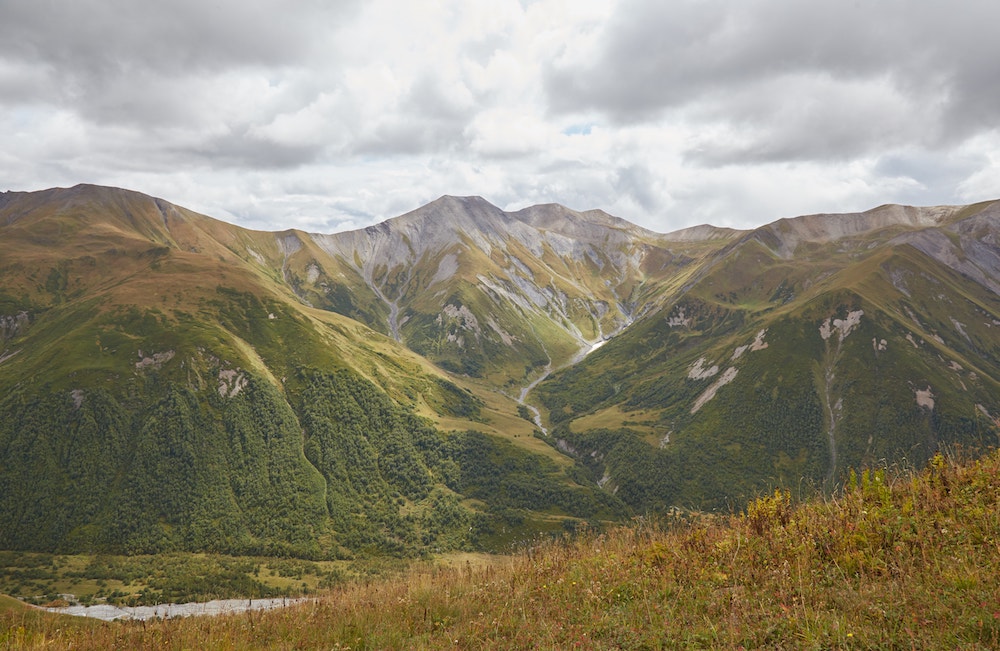

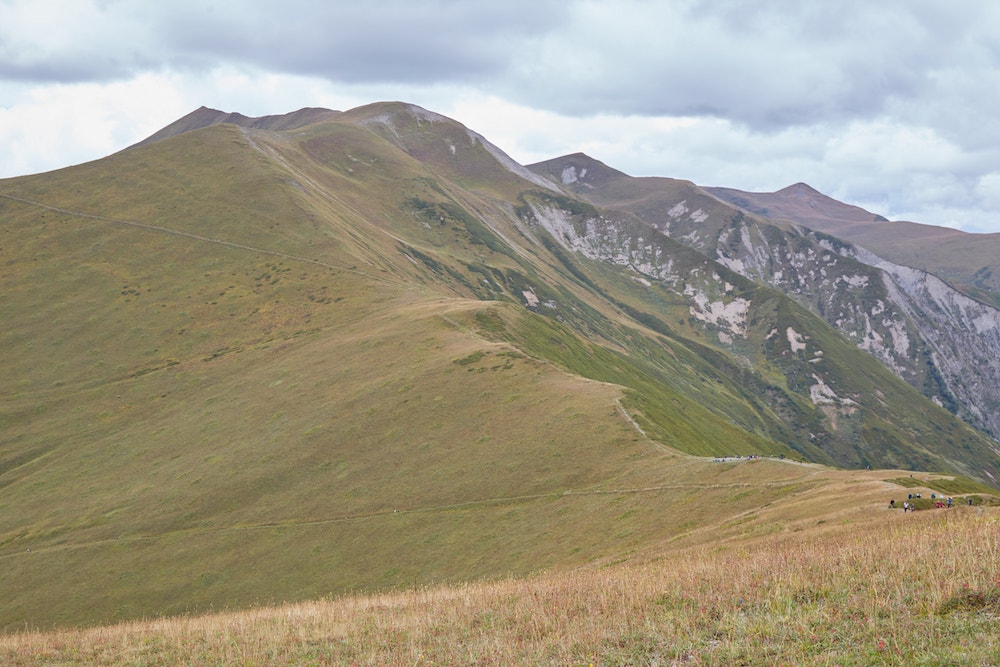
You can set your backpack down on the grass and hike along the ridge toward the glacier. The walk to the end takes about 10-15 minutes one-way. Not only can you get fantastic views of the glacier and surrounding mountains, but it’s a good chance to give your shoulders and back a much-needed break.

Coming back from the ridge, I sat down next to my backpack for awhile and enjoyed the food my guesthouse had given us that morning. For some reason, I’d hardly worked up an appetite during my first two days of trekking, but on this afternoon I was famished.
Finishing up my snack, I noticed the gray clouds growing thicker in the sky above. I had a strong feeling I’d get caught in a downpour at some point, and the only question was when.
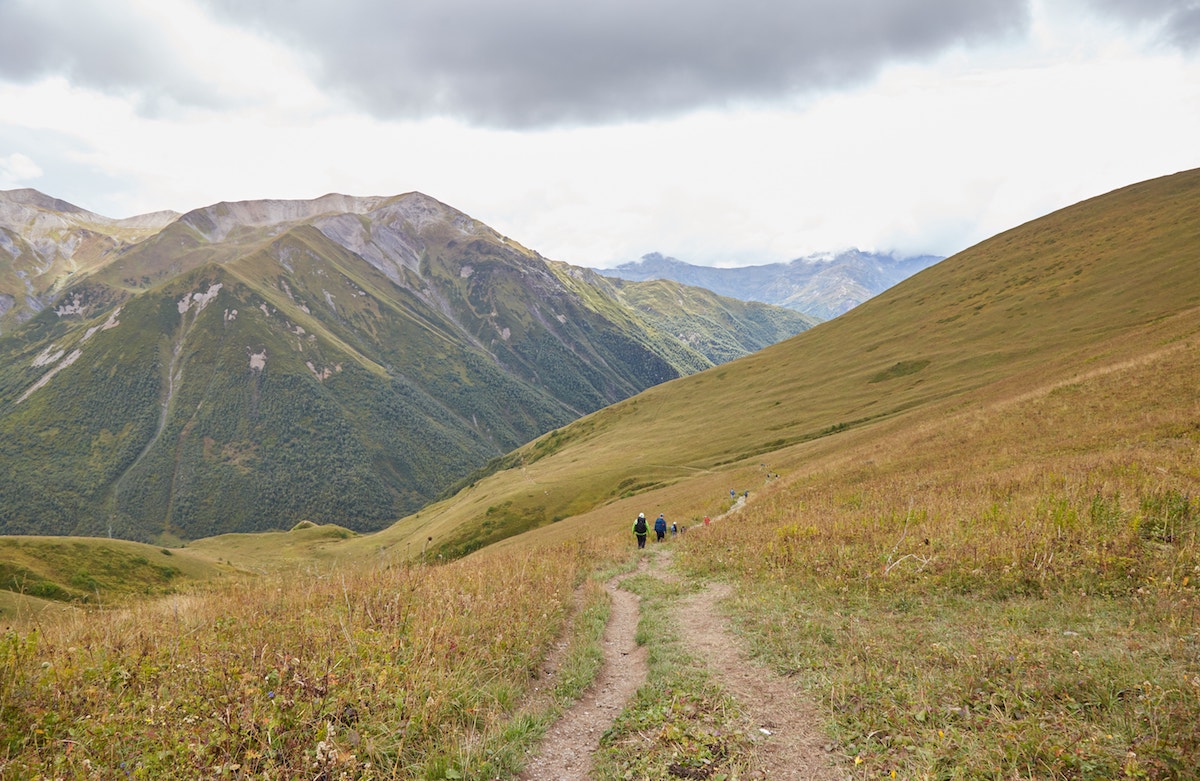


Sure enough, I was only a few minutes into my descent down the mountain before it suddenly started raining. I stopped for a moment and took out my raincoat, realizing that this was the first time I had to use it.

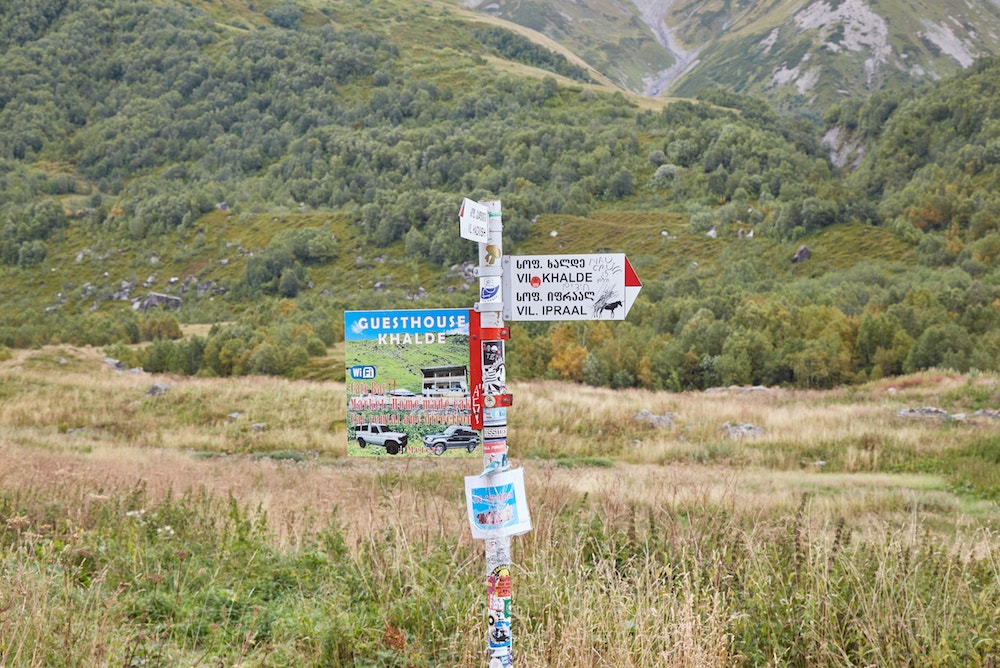

By the time I made it all the way downhill, the rain started to let up. I noticed some small huts in the distance, along with a sign pointing trekkers in the direction of Iprali.
I turned right and was relieved to know that the climbing and descending were over for the day. From this point, the hike should be another two hours of walking over relatively flat land. At least on a clear day.

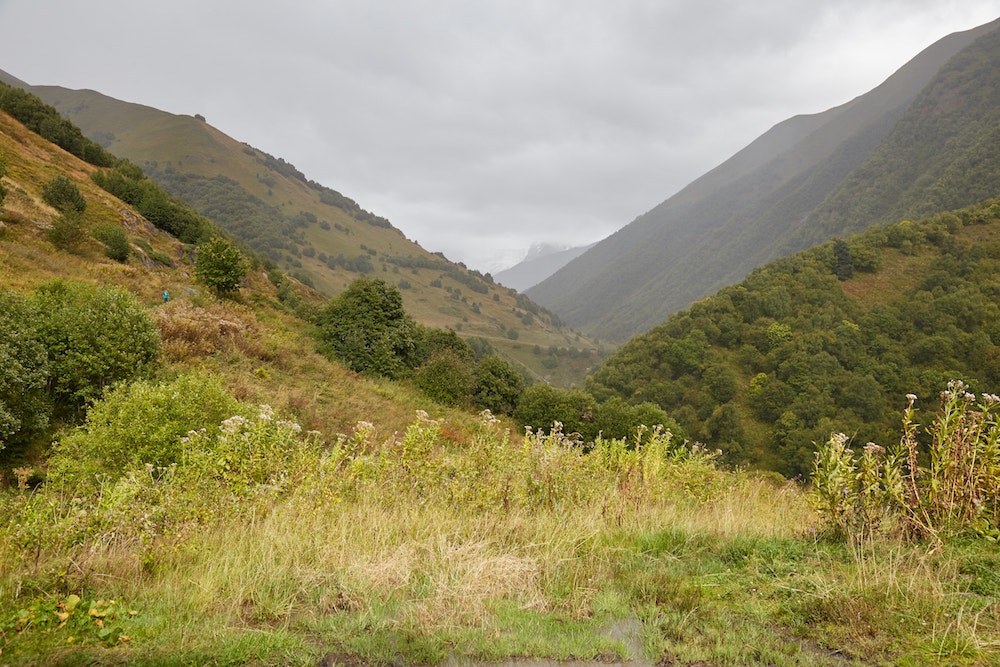

Just as I was considering taking off my raincoat and packing it up, the rain returned with a vengeance. But it wasn’t just rain this time, but hail. For a very unpleasant couple of hours, we were bombarded with little balls of ice that stung badly with each hit. I even had to stop using my trekking poles for awhile to keep my hands out of the hail’s flight path.

I passed through the village of Khalde, the final village before Iprali. And by the time I trudged into Iprali, I was freezing and exhausted. But I couldn’t relax just yet, as Iprali wouldn’t be my final destination for the day.
As I realized when double checking my reservation that morning, the guesthouse I’d booked was actually in the next village called Lalkhori. It was another 15-minute walk down a steep and slippery road to get there.
But somehow, I made it. Checking in later than usual at 16:30, I immediately headed for the shower and laid out my damp, muddy clothes to dry.
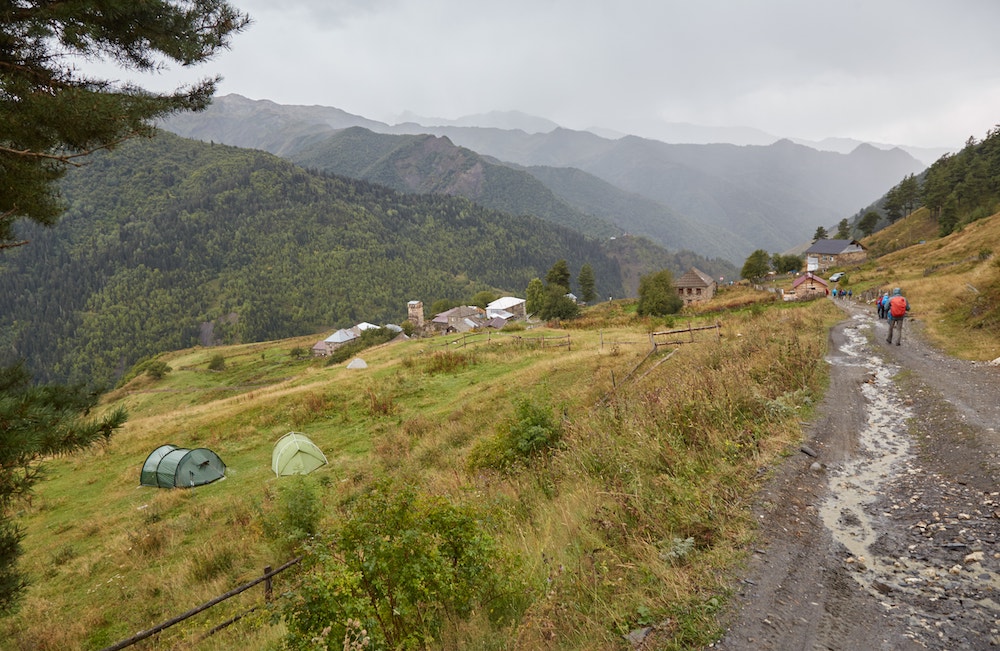

ACCOMMODATION: As mentioned, my guesthouse wasn’t in Iprali but the next village over, Lalkhori. I stayed at a guesthouse called Sweet Home. While the experience was OK overall, there were a few weird things about the experience.
First of all, we were all suddenly called to dinner at around 17:45. Until then, the standard time for dinner had been 19:00 or 20:00, but the hosts would always confirm in advance. I found the impromptu dinner a bit strange, and some guests even completely missed dinner as a result.
The main negative was that the Wifi would connect but not work for anyone. And while no fault of the guesthouse, the people in the room next to mine decided to get drunk and have an all-night party, which I really didn’t appreciate.
In total, I paid 40 GEL here for the room and two meals.
Day 4: From Iprali to Ushguli
At 12.4 kilometers, the fourth and final day of the hike is the shortest and it’s generally regarded as the easiest. That is, as long as you’re able to find the trekking path in the morning. Miss it and you’ll be stuck all day walking amongst traffic all the way to Ushguli.
The positive aspect of hiking extra far the previous day was that we had a 15-minute head start the next morning. If you’ve stayed in Iprali, you’ll end up having to walk through Lalkhori regardless.
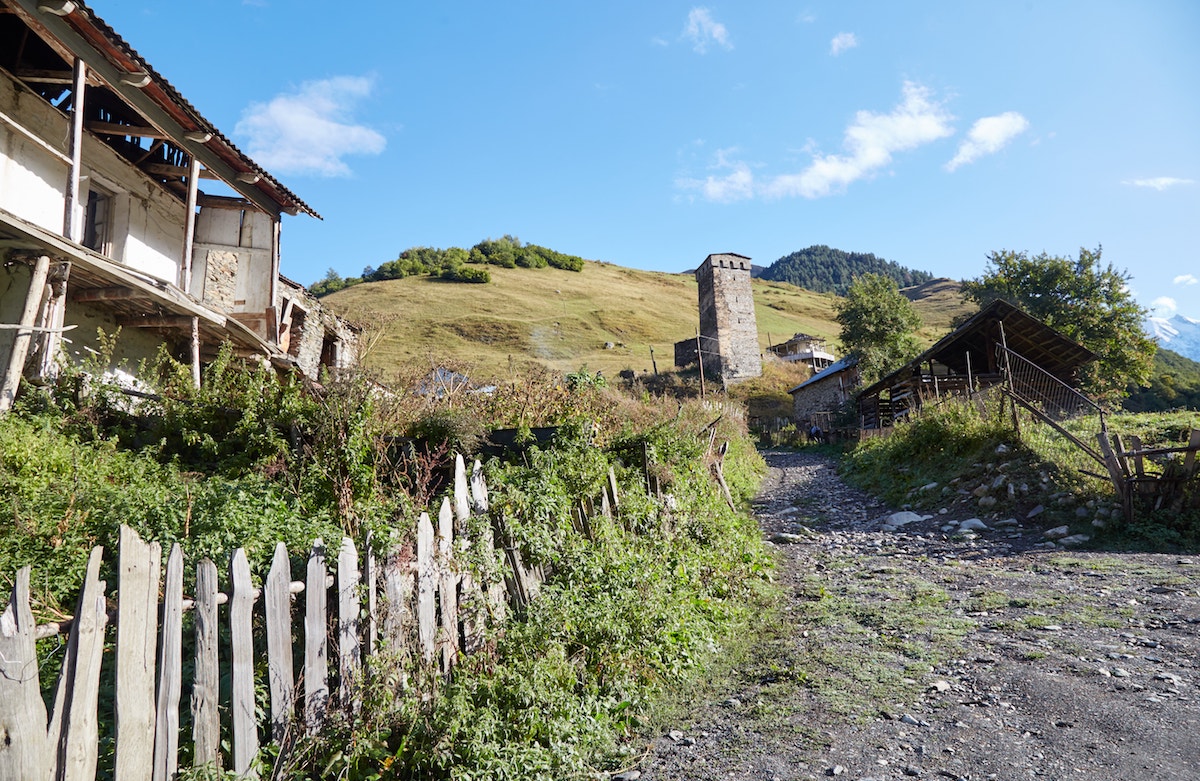
At the beginning of the day, you’ll want to walk through Lalkhori in the general direction of Ushguli. Before long, you’ll see the river on your left and a small bridge taking you across. You should also see a tiny village with a couple of Svan towers up on the hill. This is the village of Davberi, and the hiking trail starts from behind it.
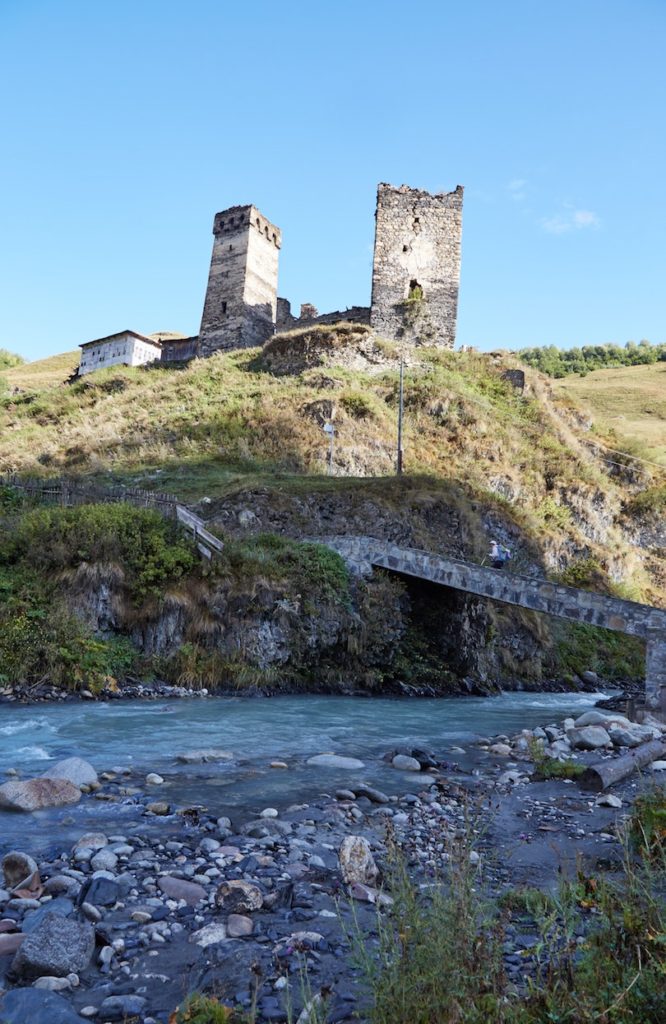
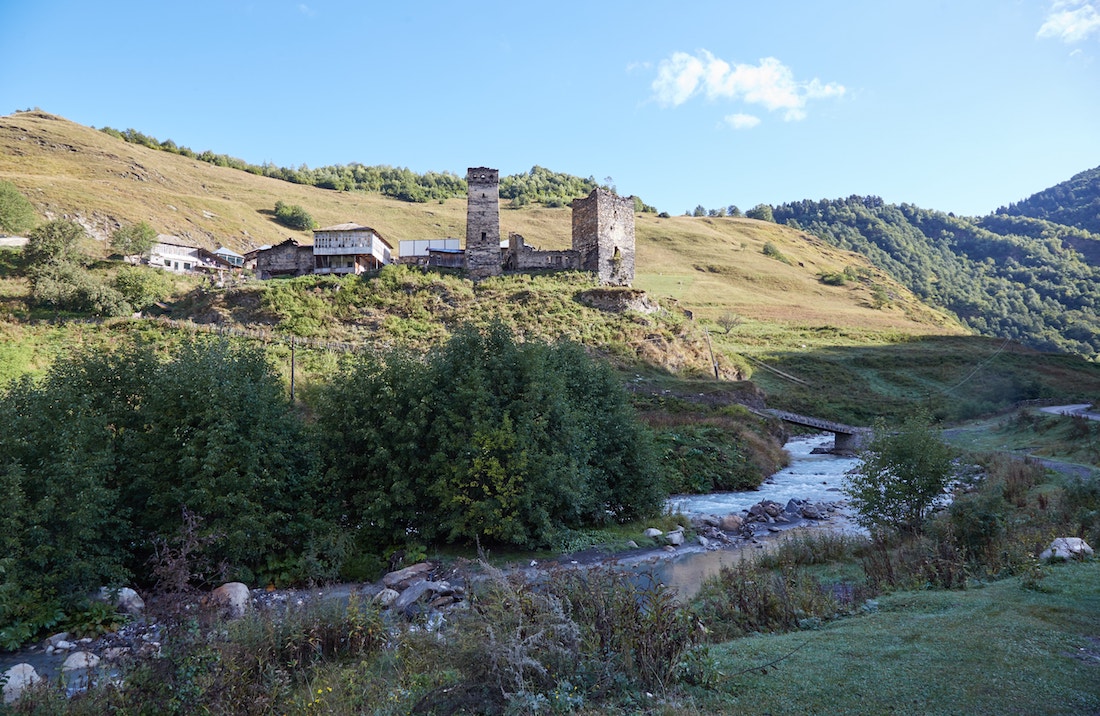
Next, continue walking uphill around Davberi. To further add to the confusion, you’ll likely encounter a dead end, with the trail being blocked by a fence. Don’t worry about trespassing, though. This is the correct path, and you just have to open the gate and continue heading forward.
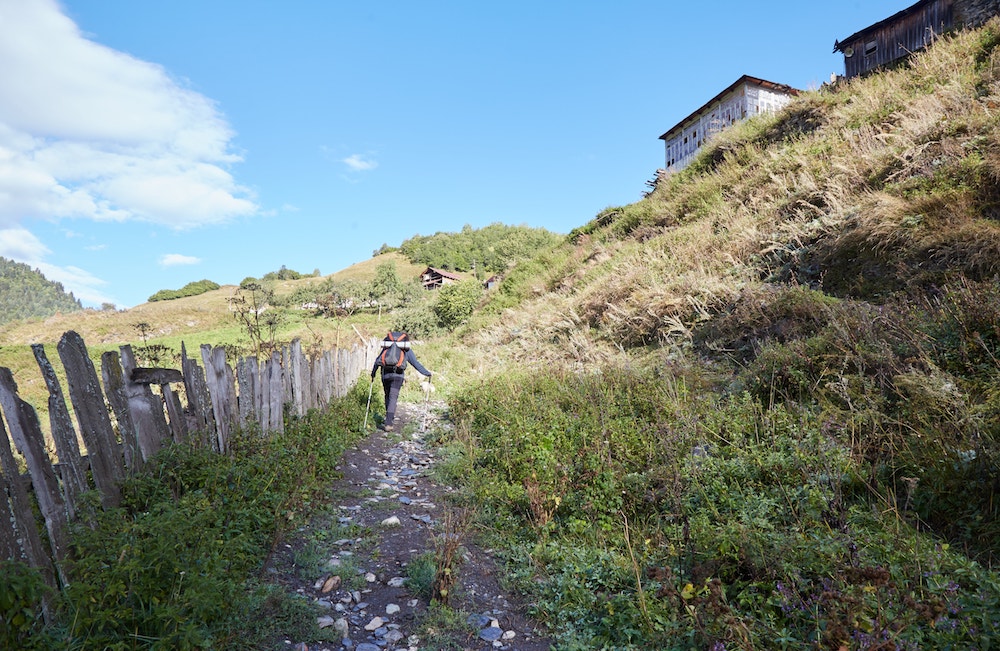
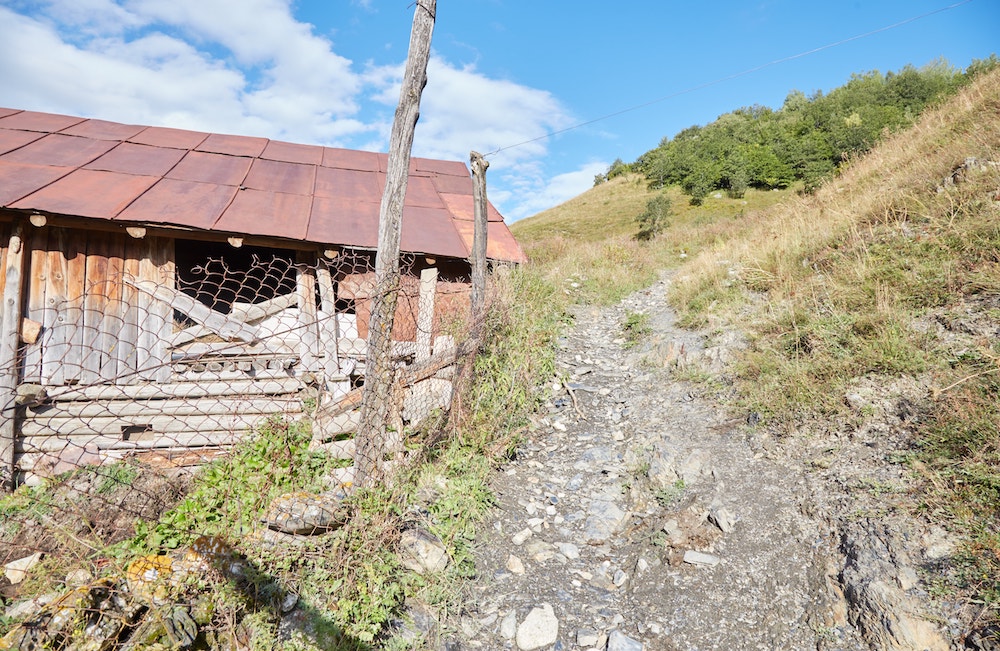
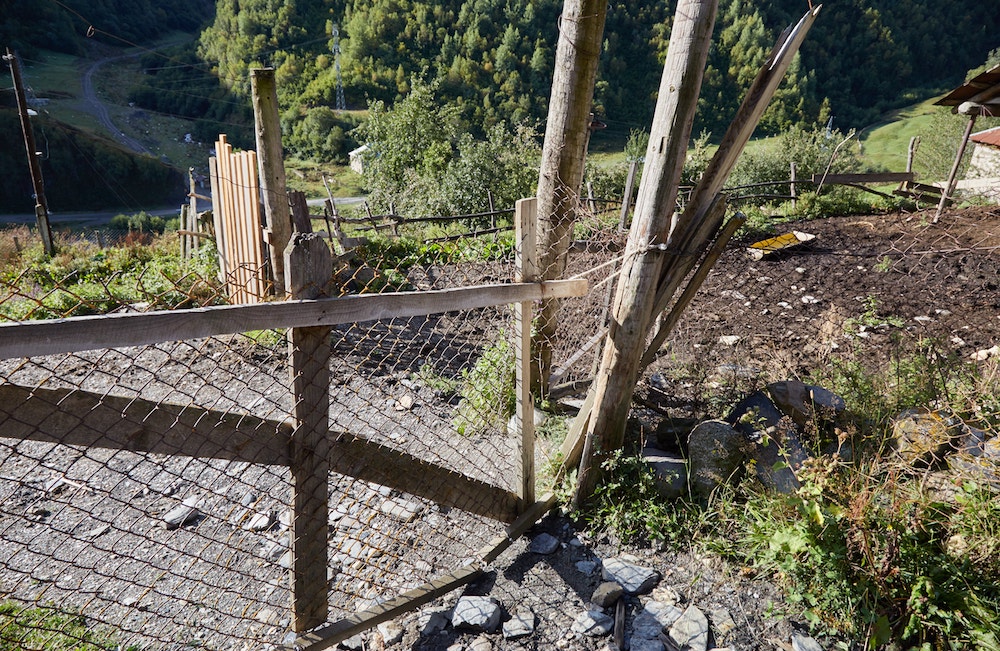
From here on, you can mostly relax until you get to Ushguli. There are no steep ascents and the trail, for the most part, is easy to figure out. The scenery on this day isn’t quite as impressive as on the previous three days, but it’s beautiful nonetheless.

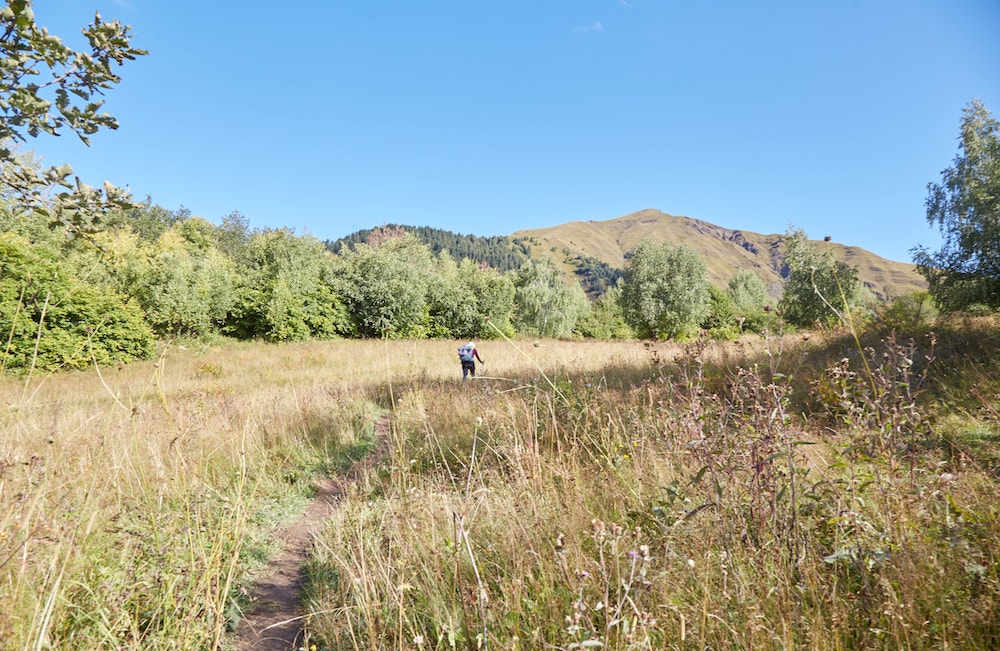
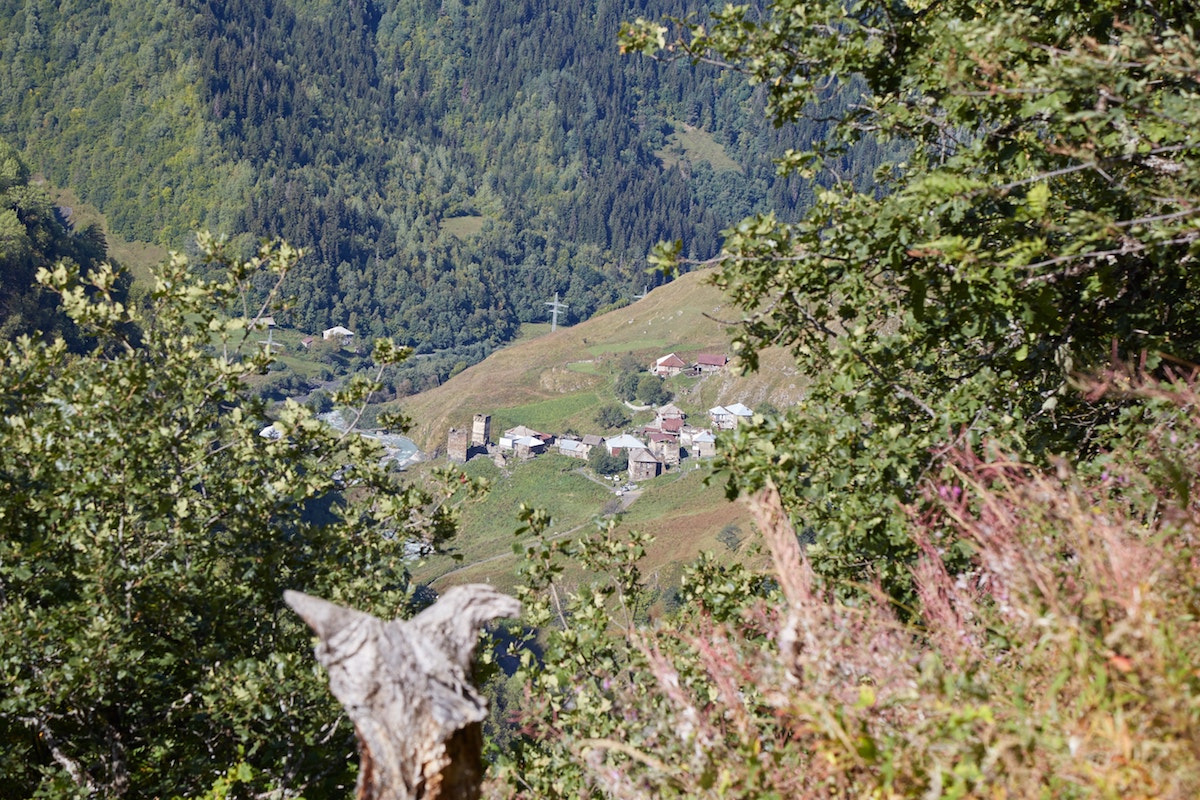
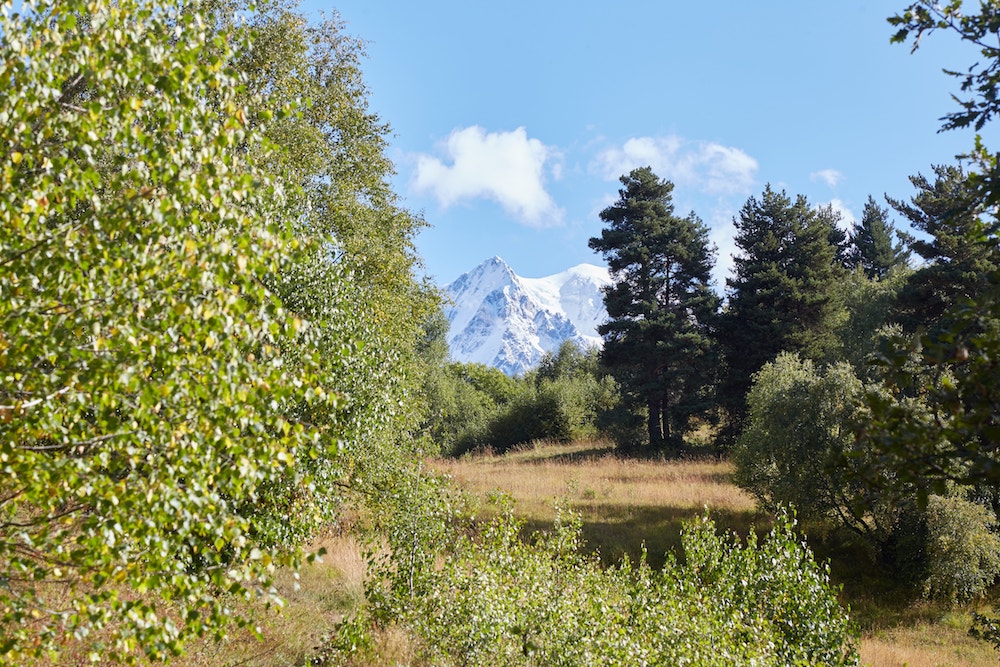

While it’s true that this portion of the trek is the easiest, it wasn’t exactly the walk in the park I’d imagined, either. By this point, after three days of strenuous trekking, the soreness in my back and shoulders had accumulated. And while my stamina was fine, I felt it necessary to take more breaks than normal.
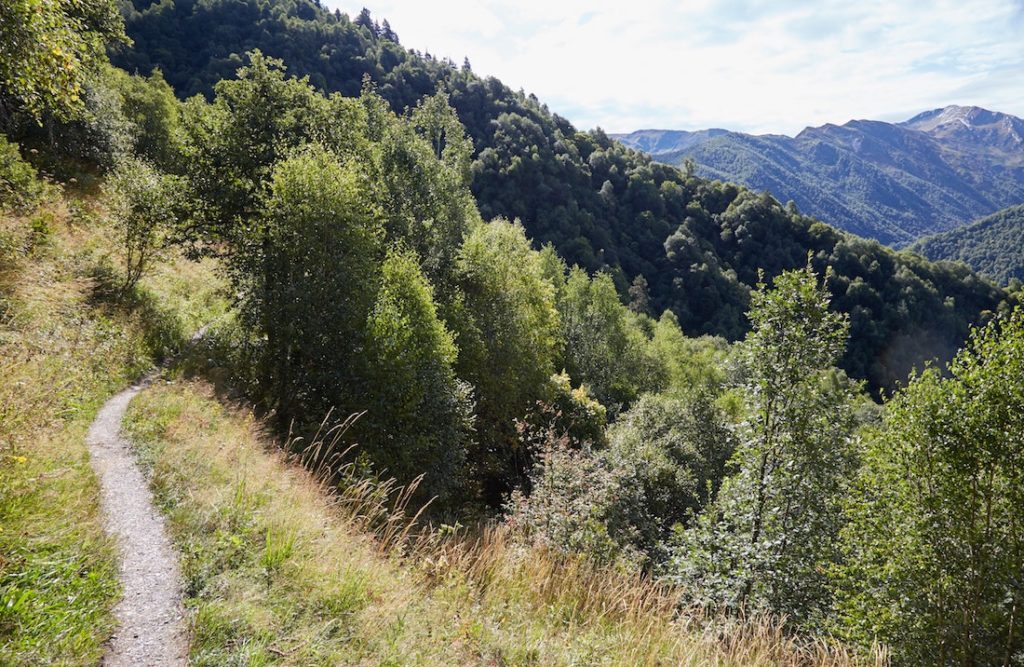
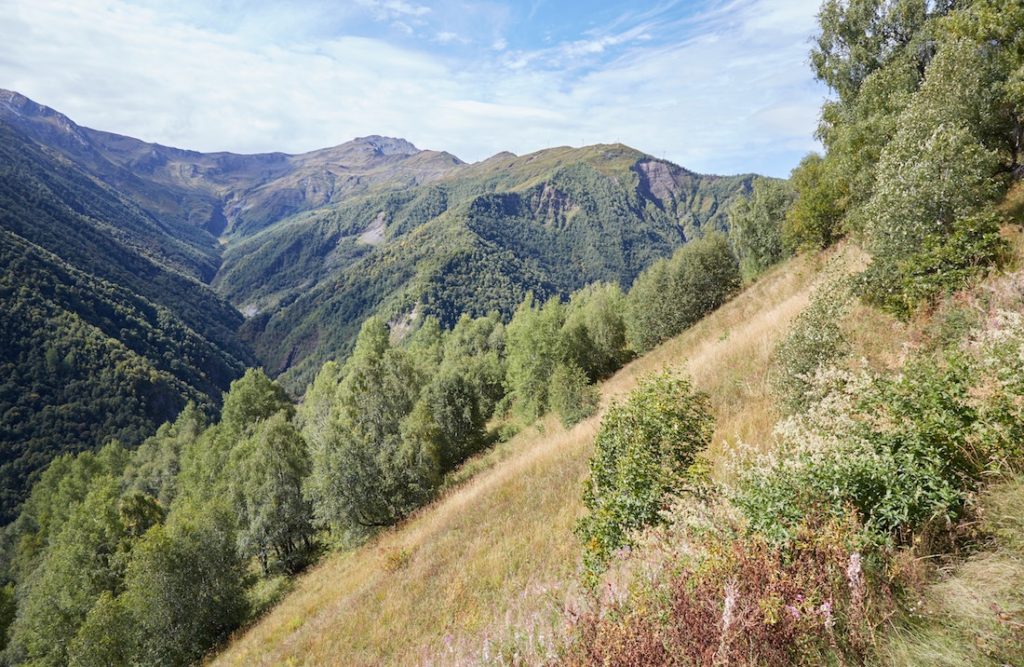
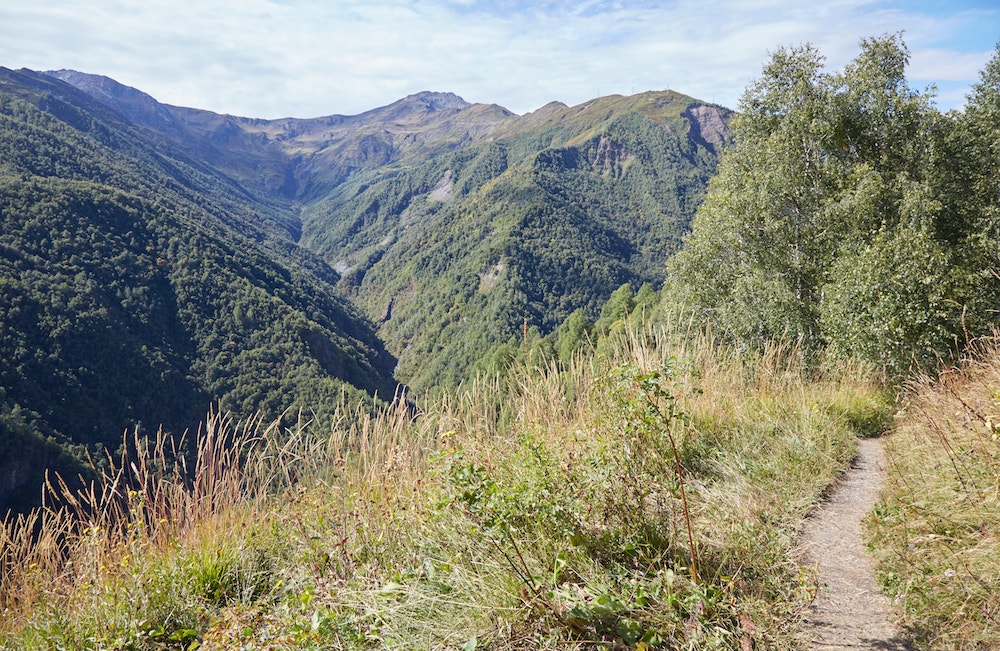

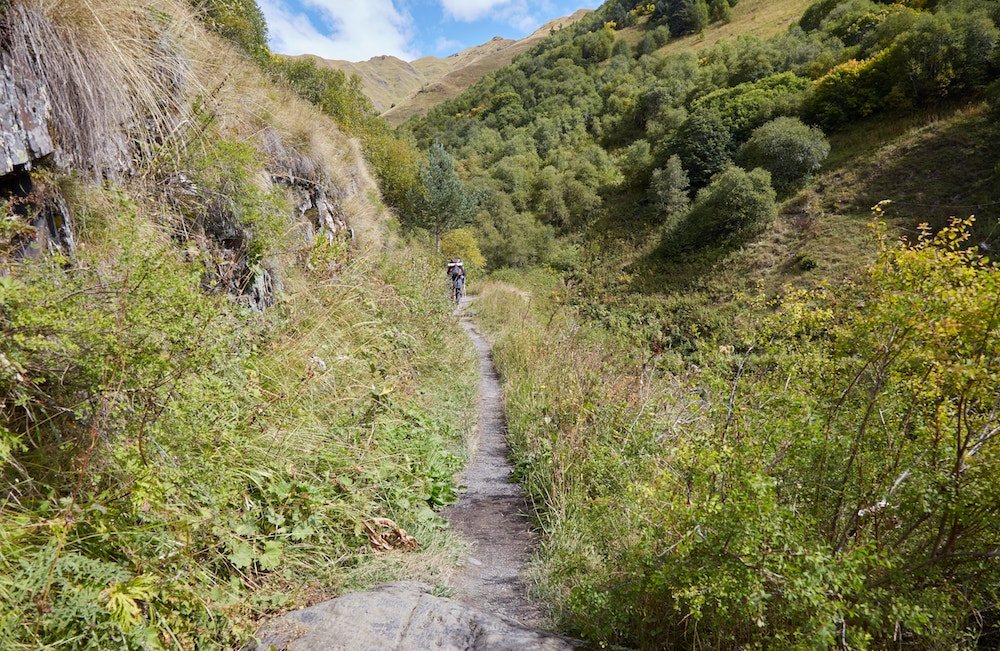
As mentioned, the path overall was pretty easy to figure out. But there was one instance in the middle of the forest where the path splits into two. Consulting the Caucasus-Trekking article, I found the passage which says: “After climbing up the hill and going on a bit the way splits. You need to take the path to the right which is not so steep; the other way leads up the mountain.”
However, after taking the path to the right, it was clear after a minute that it was a dead end. So we took the left path and ended up just fine. And we didn’t encounter another area where the path split. So having completed the hike, I still have no idea which part the guide is referring to.
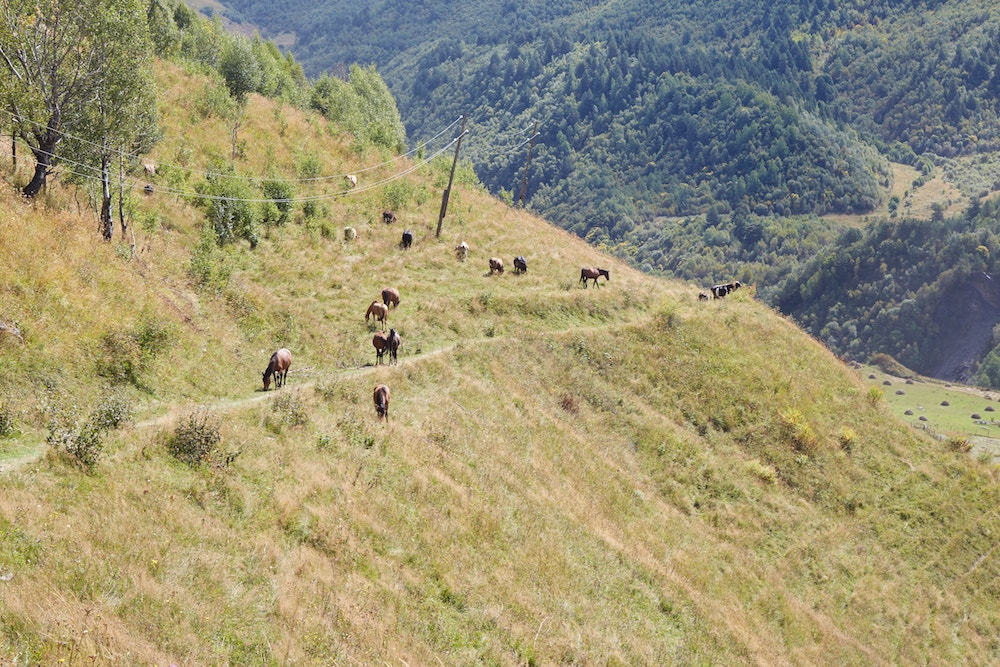
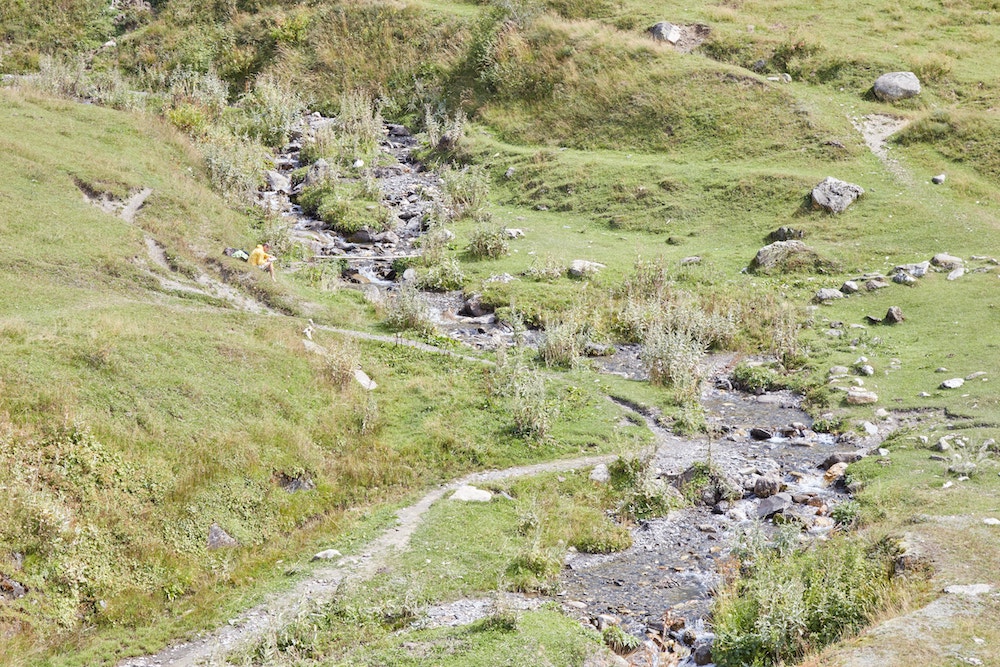
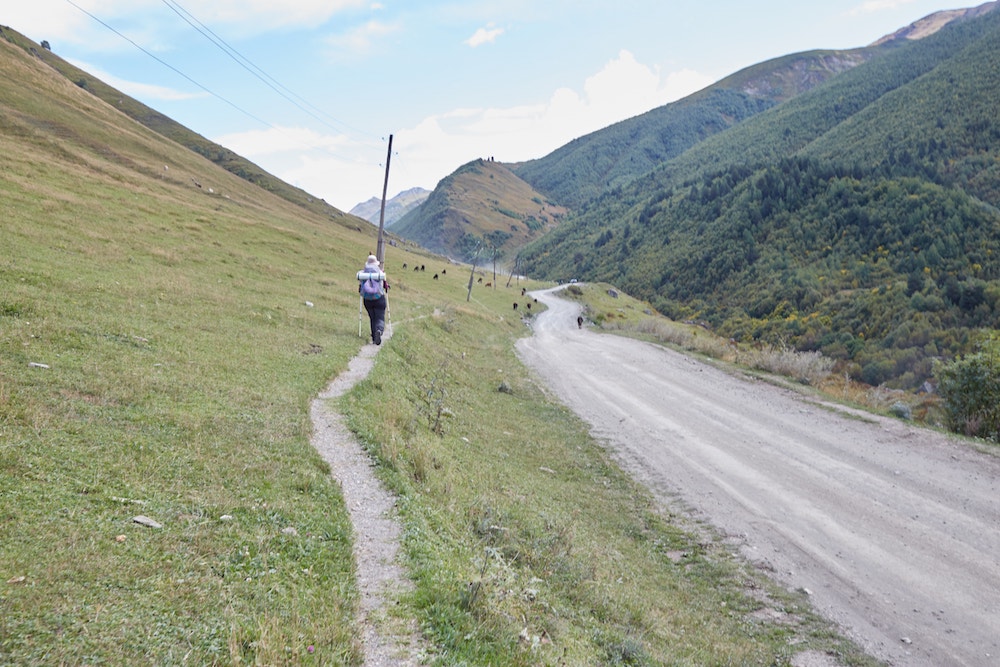
I’d been hiking for most of the day with two other trekkers from my guesthouse. And close to the end of the hike, we got to a part of the narrow path that was entirely blocked by huge cows. But one helpful horse noticed us, and he went over to the cows to nudge them out of the way!
But soon, our path was blocked yet again by some other horses. The same horse from before then came and pushed them out of the way, clearing the path for us again. It was quite a surreal experience.

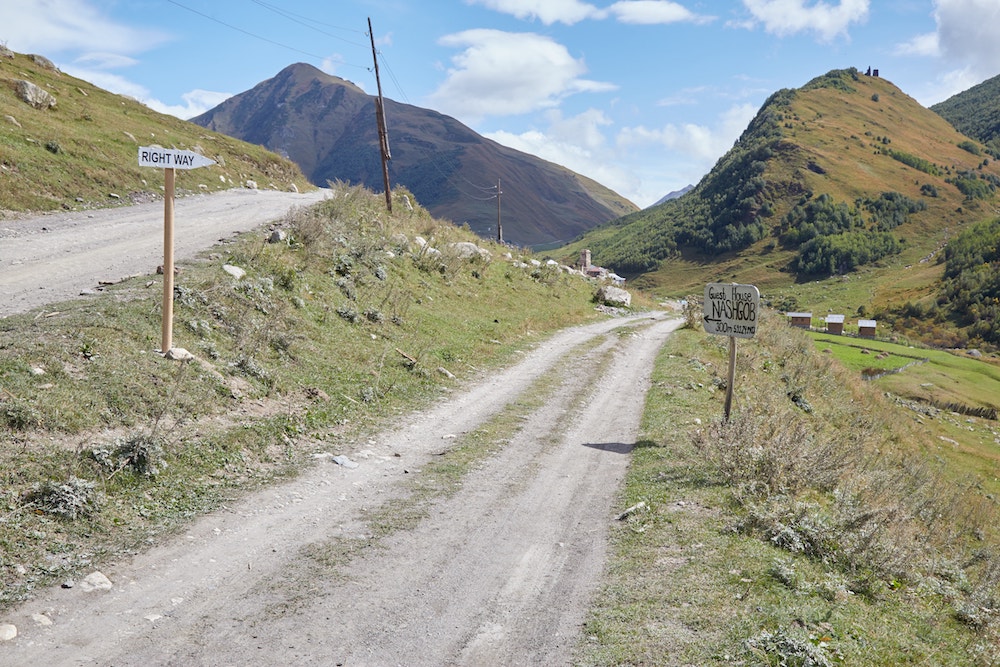
After passing over a small river, you’ll reach the final portion of the hike. For the last hour or so, the path will run parallel to the main road. From this point on, the trail is flat and easy.
You’ll find a place where the road splits into two, and locals have even placed a sign that says “Right Way.” While you don’t have to walk down this path to get to Ushguli, it will take you through another scenic little village called Murkmeli on the way there.
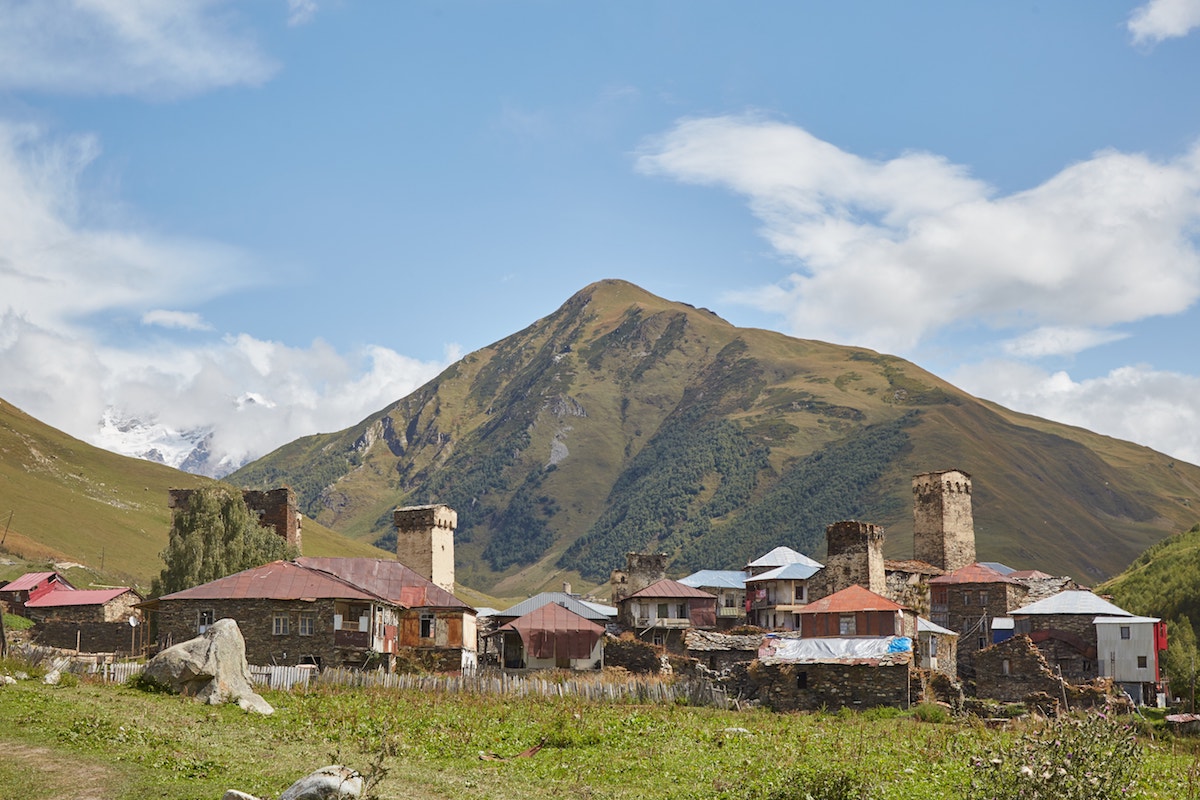

Personally, I love walking through these little Svan villages, and I found it to be one of the highlights of trekking through Svaneti. Passing through Murkmeli, your final destination of the four-day hike will finally come into view: Ushguli.
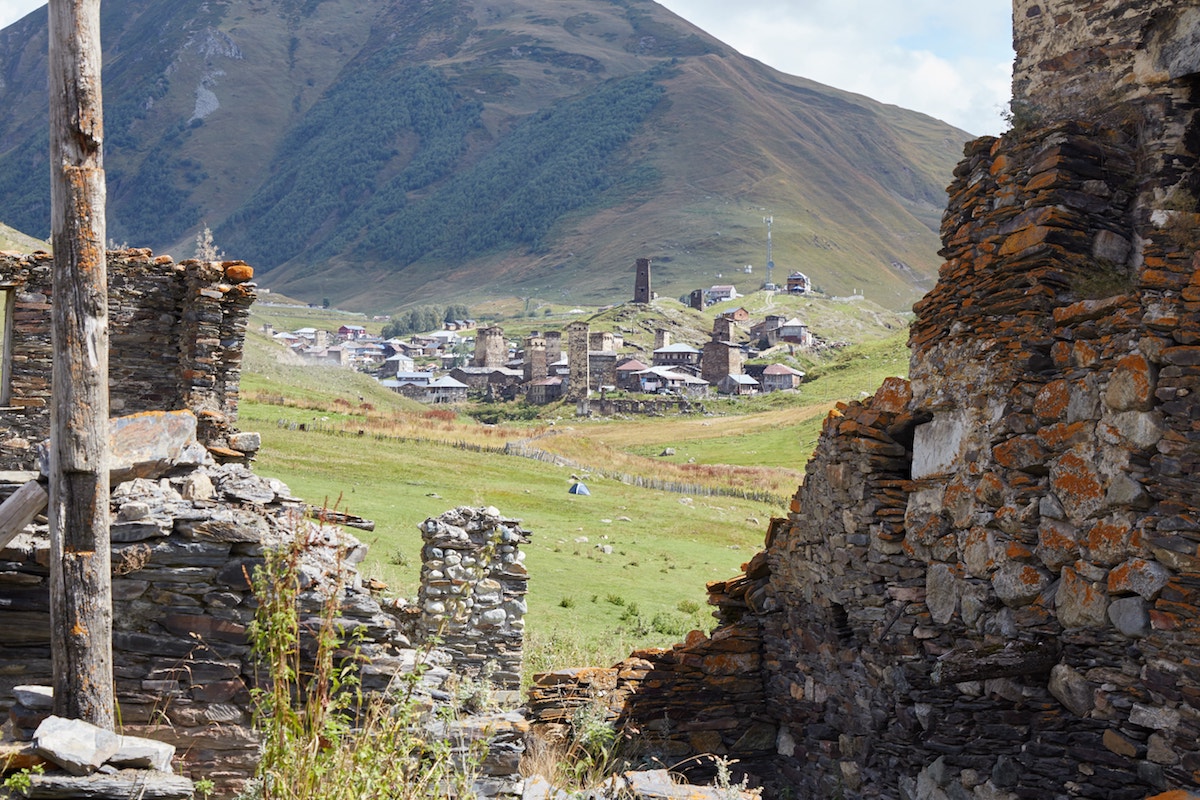


Exploring Ushguli
We strolled into town and sat down at a cafe near the western edge. The four-day hike was finally over and I was feeling grateful for having made it with no major issues.
Only a few minutes had passed before four or five other hikers we’d met along the trail joined us at our table. We discussed our trekking experiences, but then the conversation quickly turned to finding transport back to Mestia.
I happened to be the only one opting to spend the night in Ushguli. And after having explored the town, I’d argue that those who immediately return to Mestia upon completing the hike are really missing out.

After saying goodbye to the other hikers, I found my guesthouse in the town center and set my bag down. It was still early afternoon and I had plenty of time to explore. While I expected to find myself exhausted, I felt incredibly light on my feet without my heavy bag on me anymore. And so I went out to walk around.
My first stop was Tamar’s Tower, just south of the river. Situated atop a hill, you’ll be able to spot it from all over the village. Supposedly, this was once the winter residence of Queen Tamar, one of Georgia’s most respected historical figures who ruled the country in the 12th century.


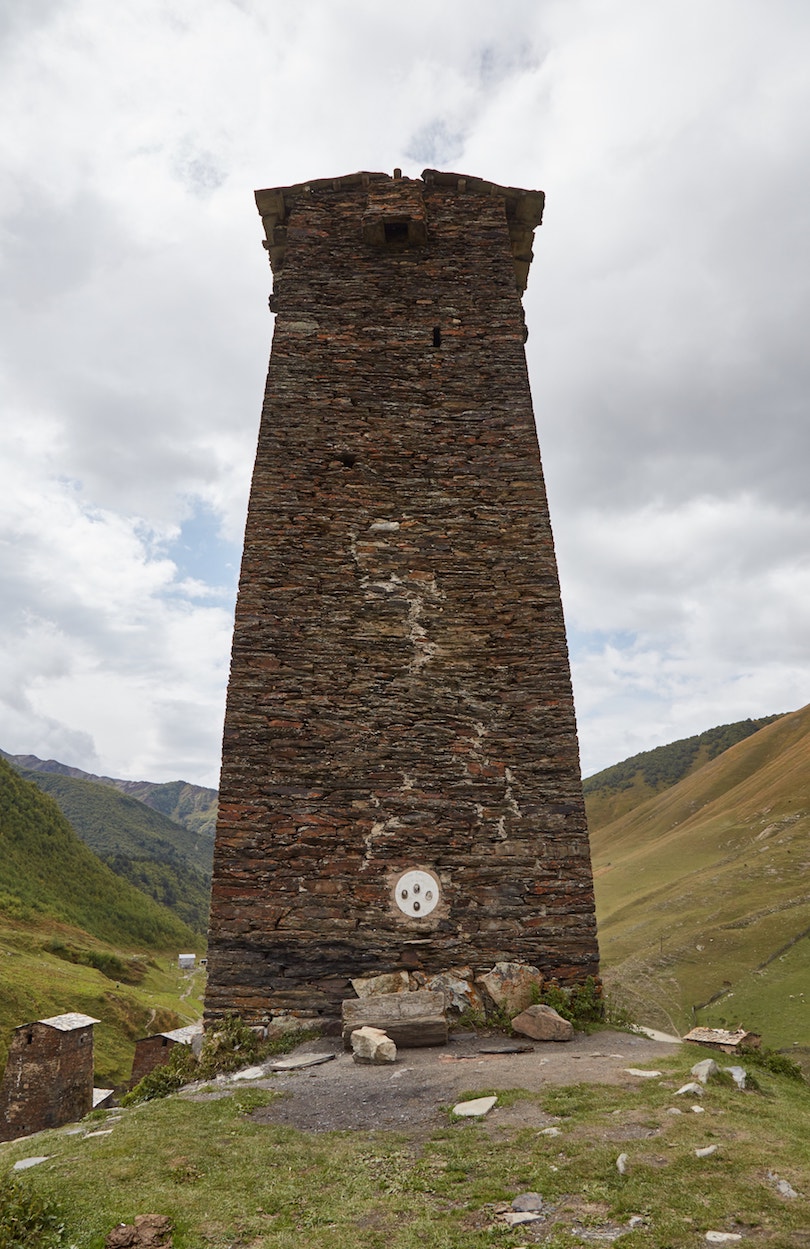

There were once four such towers, locally known as ‘Supar,’ though only this one remains. As is also the case with many of the Svan towers in the region, they were destroyed by the Soviet army in the 1930s.
While the tower itself can’t be entered, be sure to take in the view of the town below from the other side. And the hill is inhabited by a tough cat who I even saw chasing around one of the local dogs!
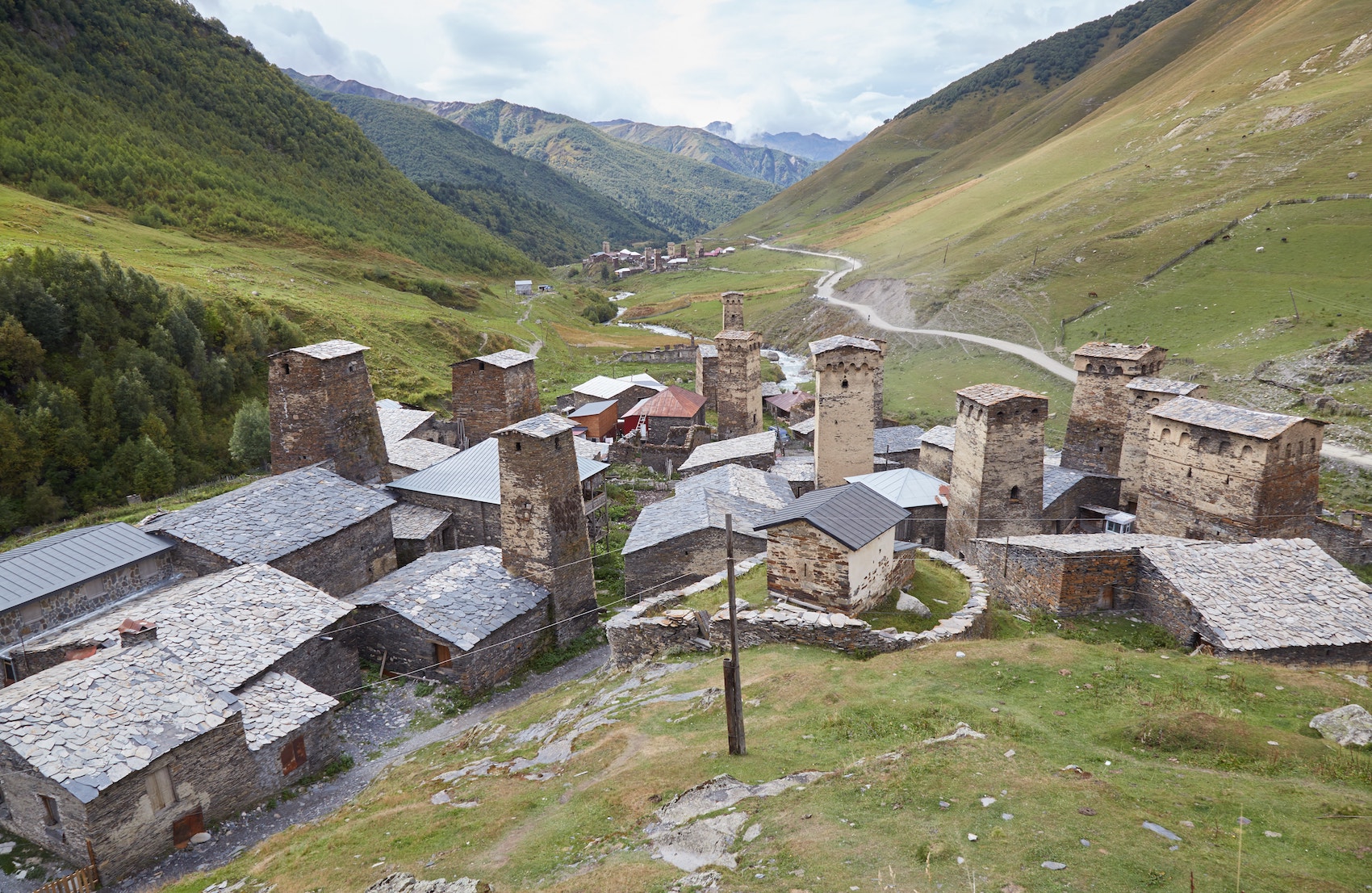
From the hill, I spotted a monastery far off in the distance and wondered what it was. Thankfully, Ushguli is well-connected by walking trails, and it took me about twenty minutes or so to reach it on foot.
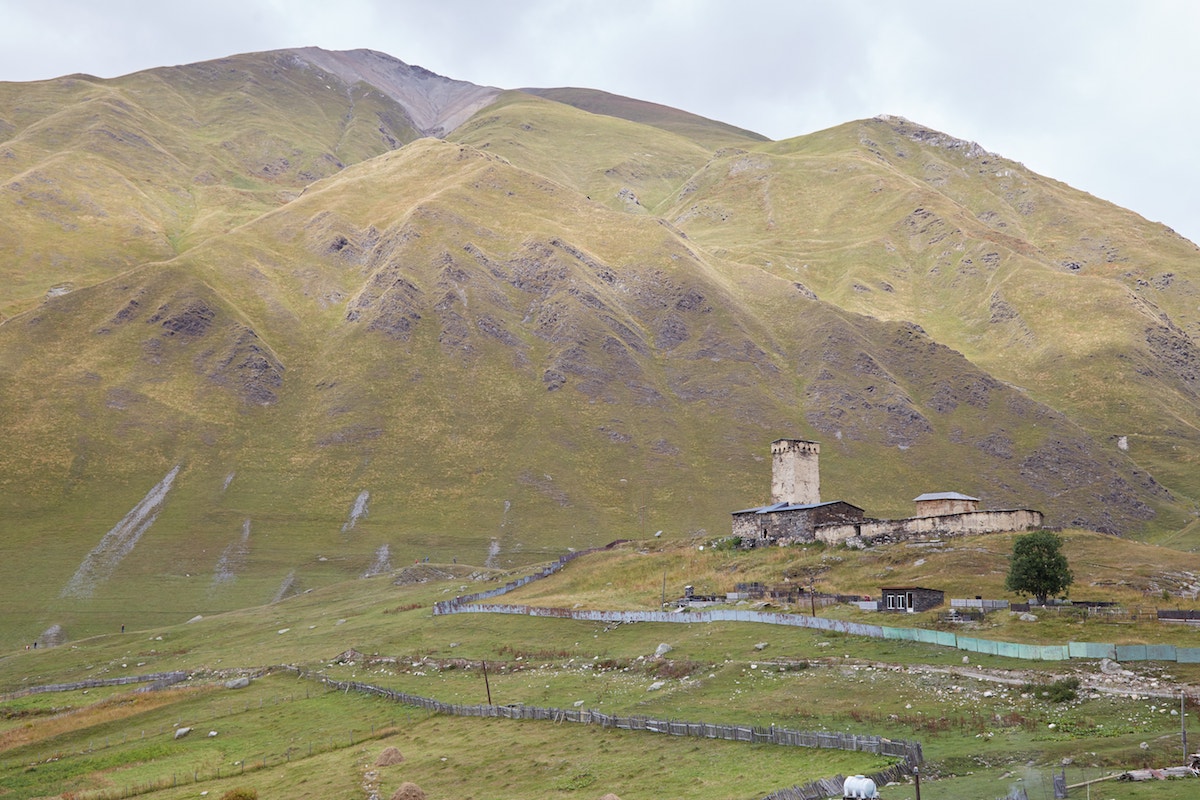
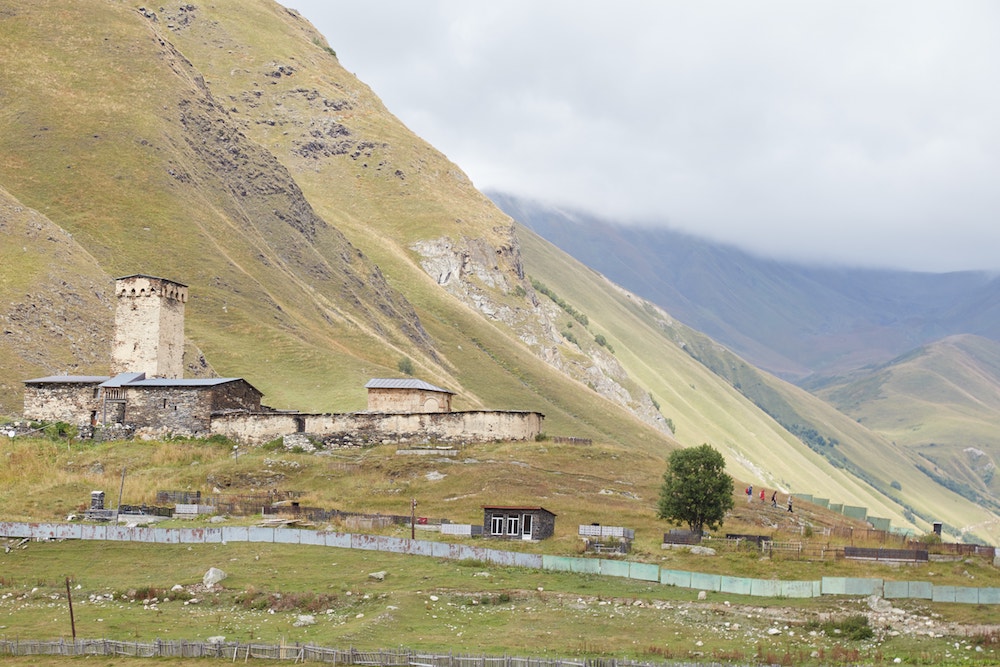


The name of the church is St. Mary’s and it dates back to the 12th century. Interestingly, locals refer to it as Lamaria, the name of the local pre-Christian goddess of cattle, grain fertility and needle-working.
Before the Christian era (or perhaps even well into it), there would’ve been a pagan temple dedicated to Lamaria at this very spot. As I’ve come to realize in the Caucasus, if you’re wondering where all the pagan temples once stood, just look for the churches!
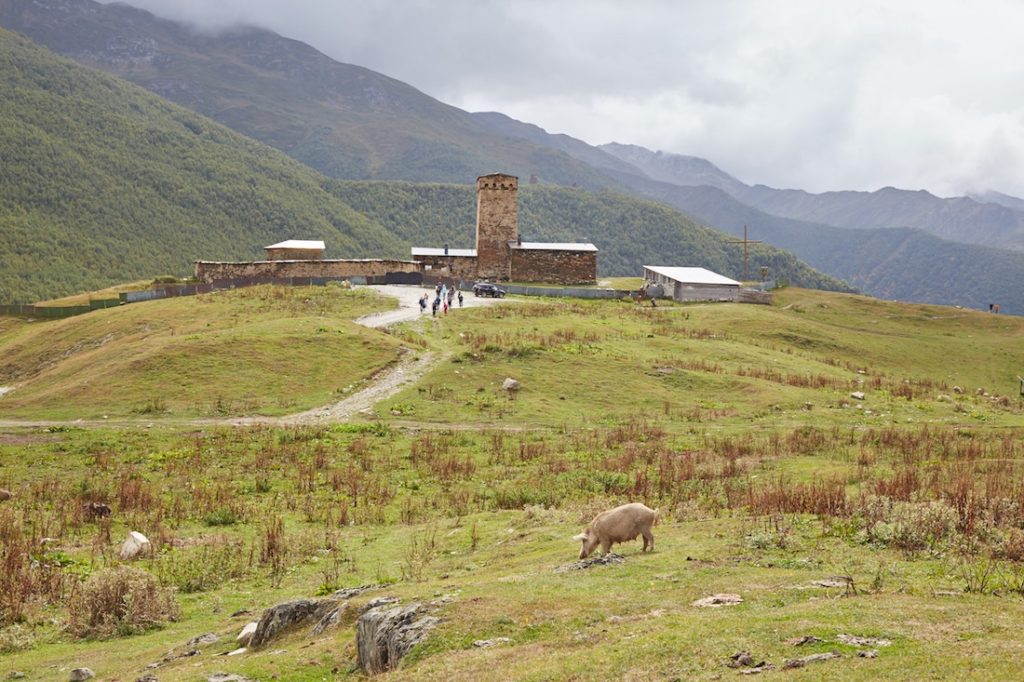

The church consists of just a single structure and a small graveyard and is nothing too remarkable. Further out back, however, you can walk several minutes to a viewing spot which offers excellent views of Shkhara Glacier.
At least on a clear day. Unfortunately, the fog and clouds completely obstructed my view, but I’d get a glimpse of the glacier the following morning.
Hiking to Shkhara Glacier is one of the most popular day hikes out of Ushguli, taking around 5 hours to get there and back. Though I strongly considered extending my trip by a day and hiking there the next morning, I ultimately decided that I’d done enough trekking for one week.
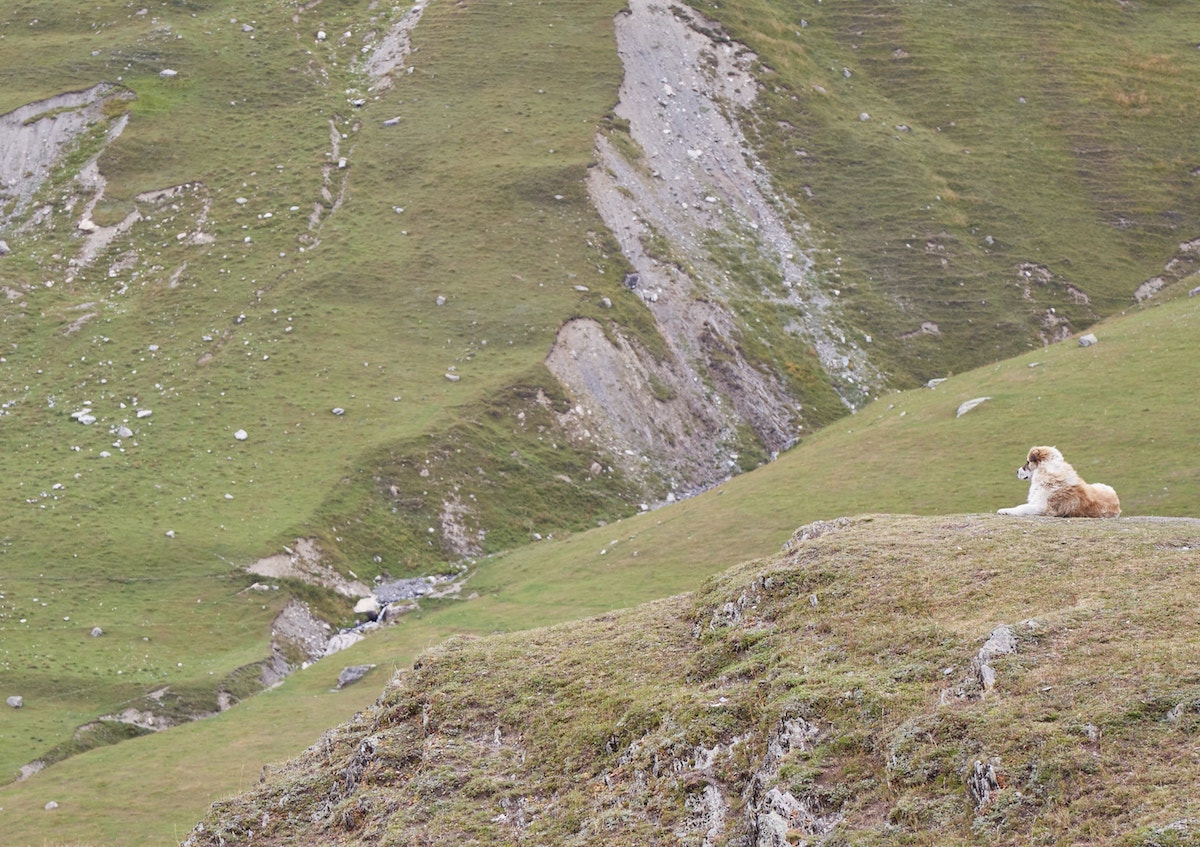
Also in Ushguli, I stopped by another local museum, much like the Ratiani Family Museum I found in Mestia. For a fee of 5 lari, a local man, whose family has owned the tower for centuries, explained the room and the functions of the various objects inside.
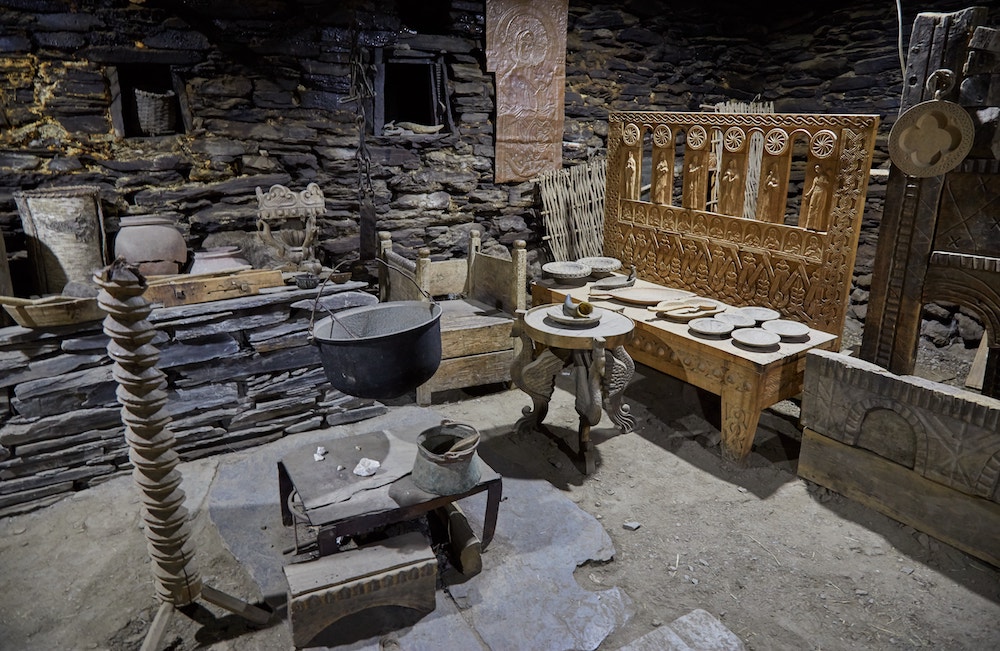

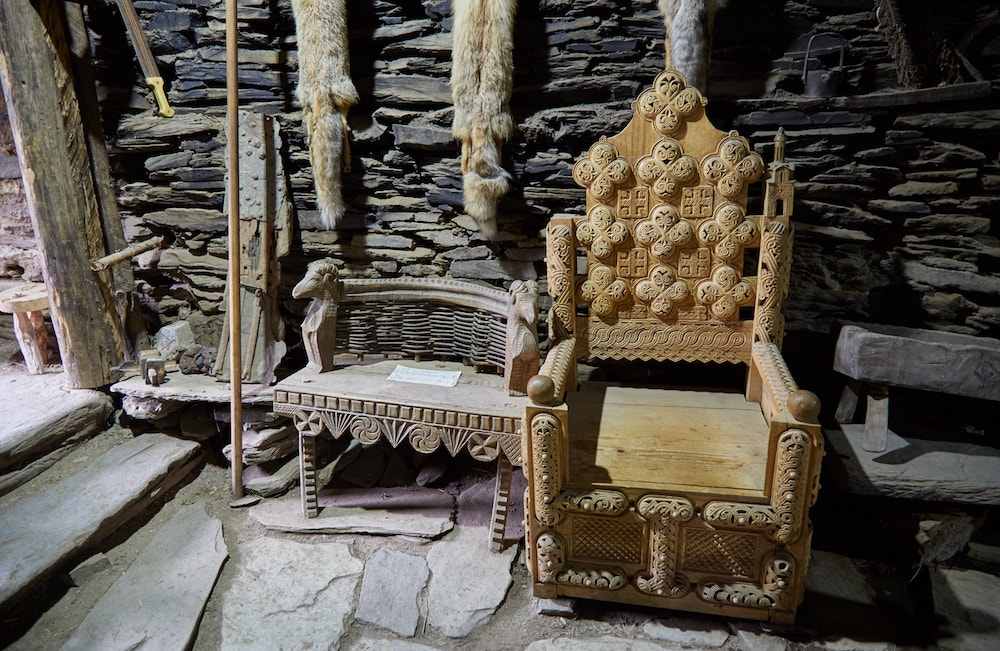
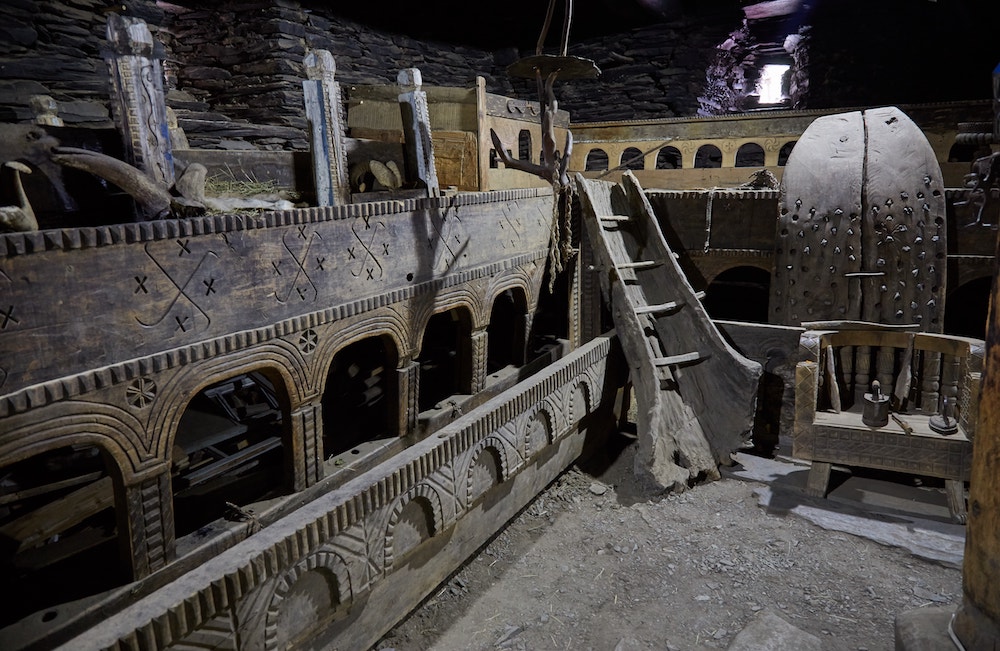
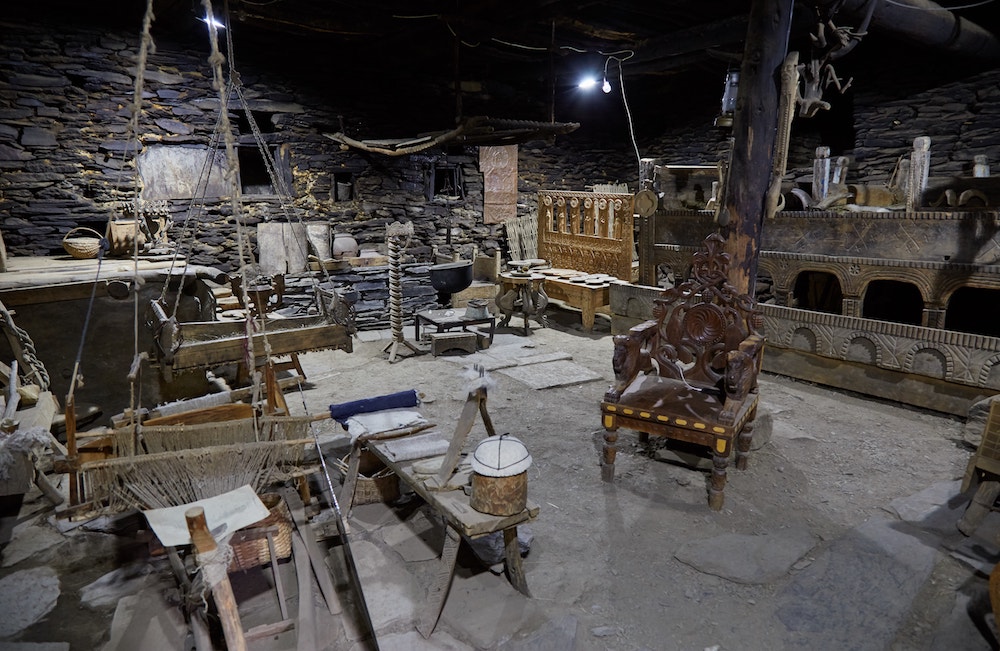
He explained how the animals and family would sleep in the room together in the winter, and the precautions taken to prevent fires. Supposedly, they kept a fire burning constantly throughout the day and night during the colder months.
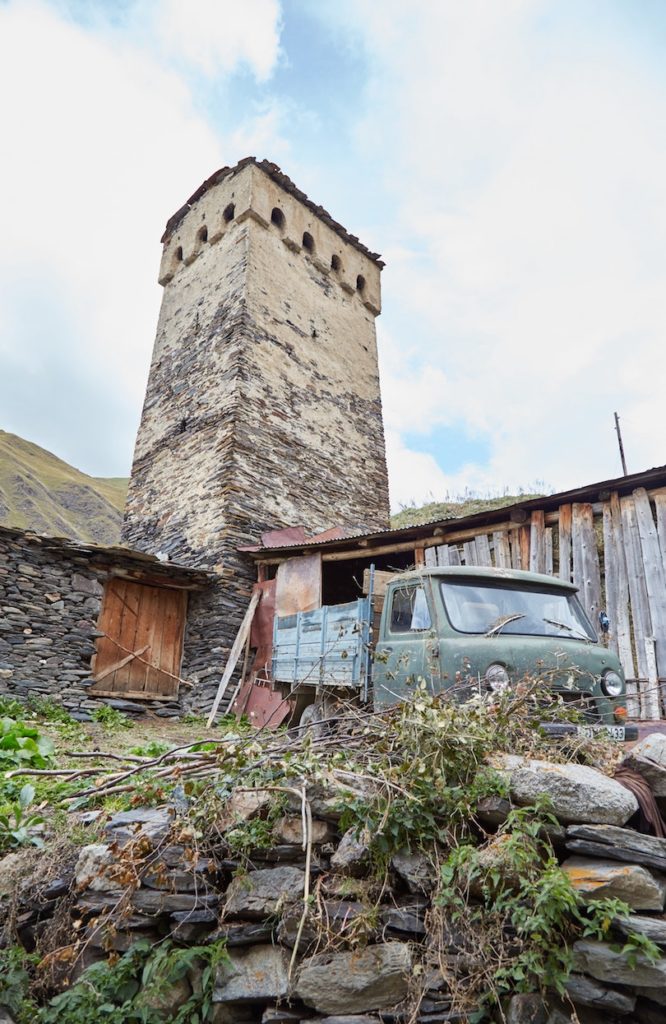
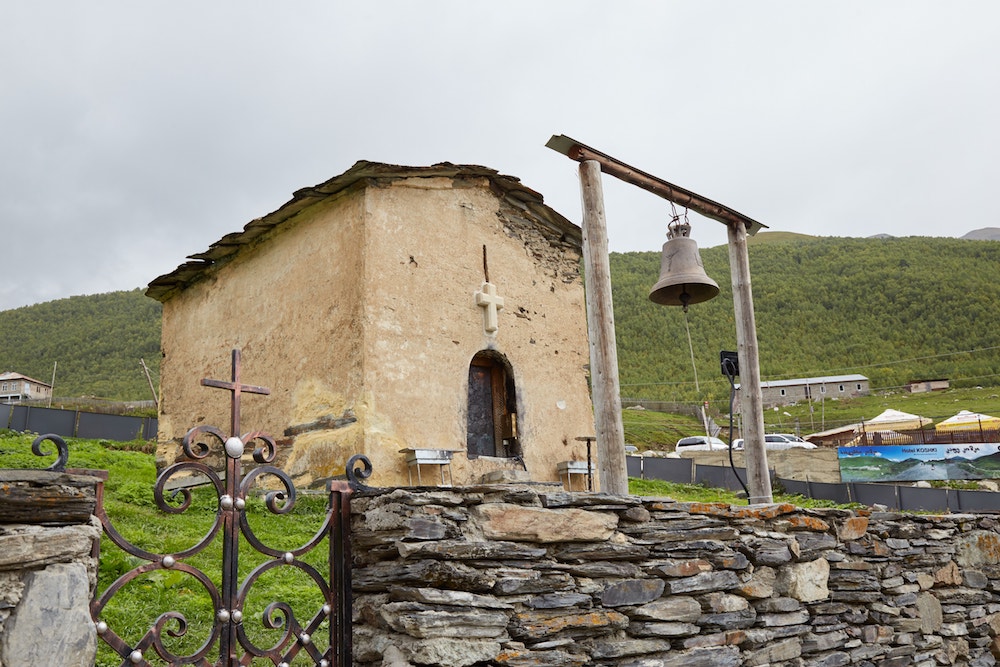
Exploring further, I passed by yet another church named after a local Svan deity, the ‘Pust Church.’ And on the way back to my guesthouse, I even passed by the local cinema, outside of which were a group of pigs hanging out looking for food. Or perhaps they were waiting for the next showing?
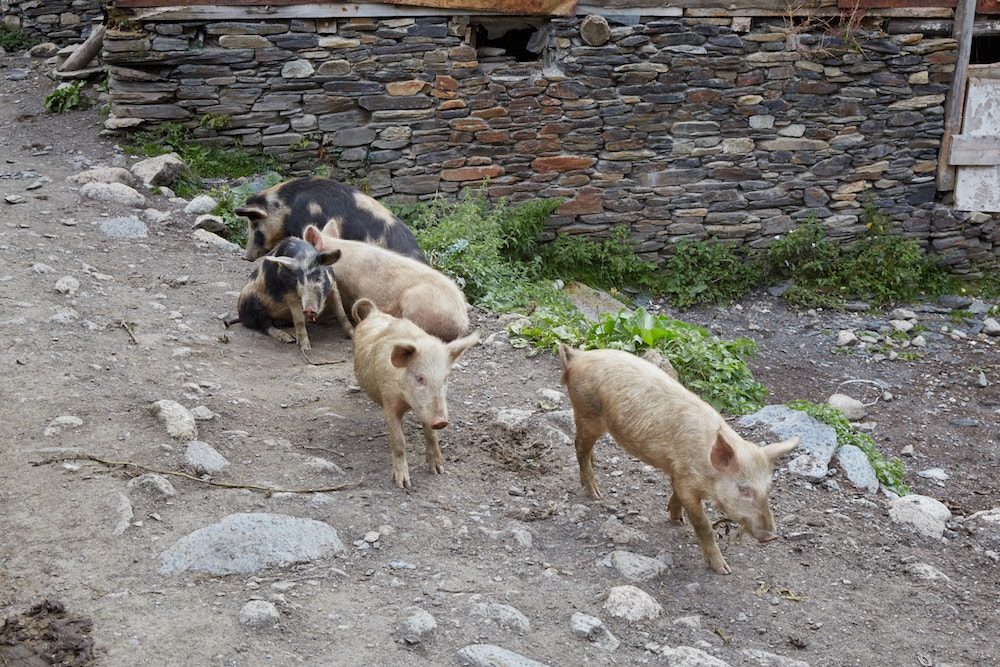
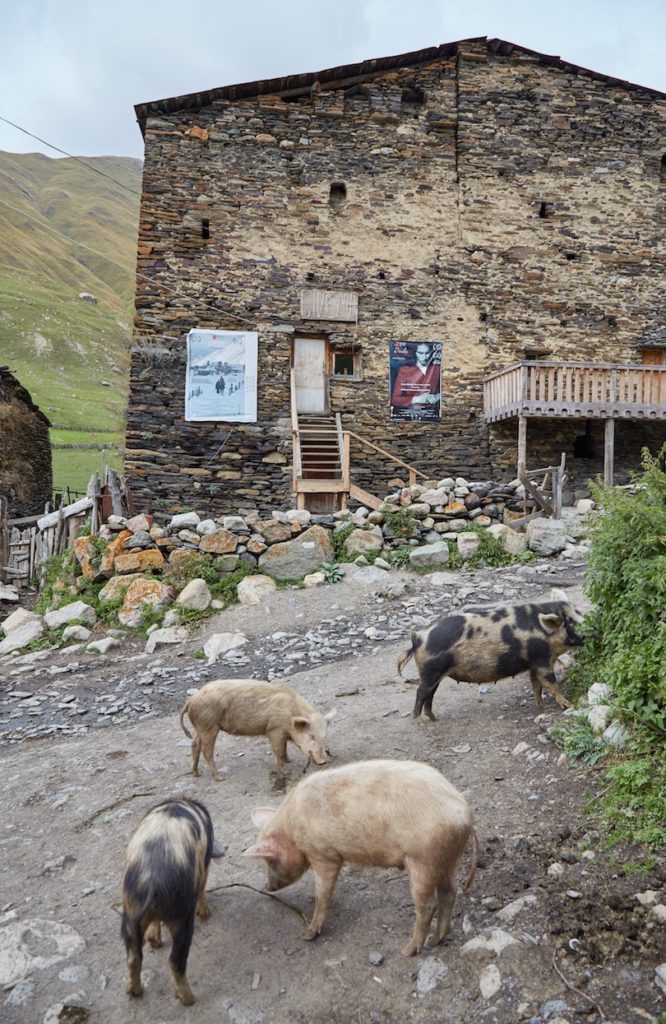
After a filling dinner and breakfast, it was finally time to end my journey through Svaneti and make the long trip back to Tbilisi. It was a clear morning, and I spent awhile on the bridge admiring the scenery before hopping in a Mestia-bound taxi.
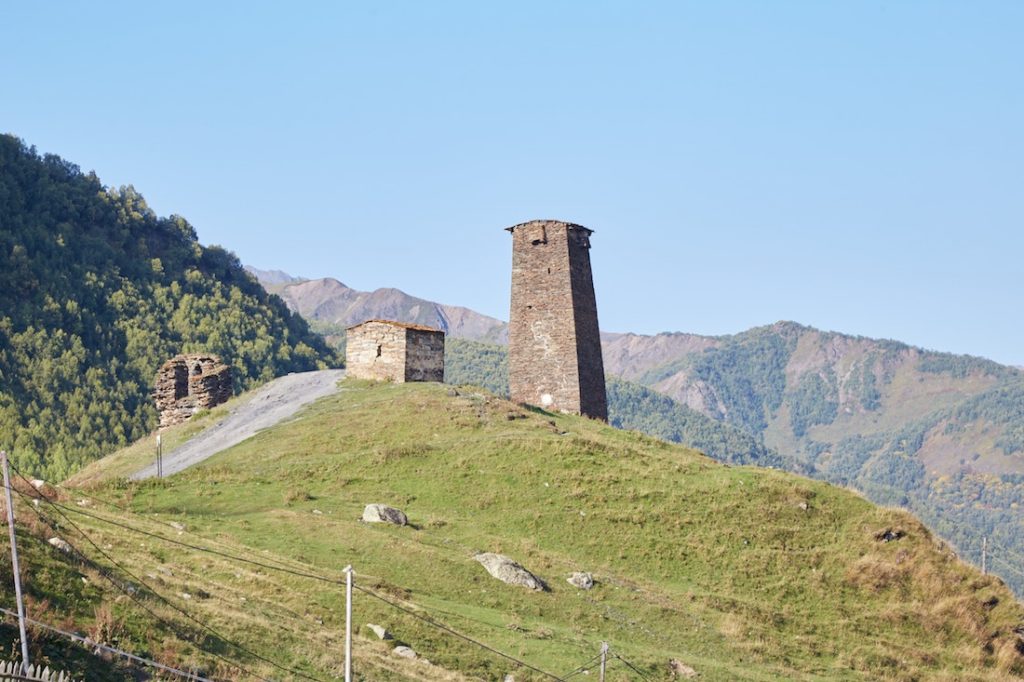
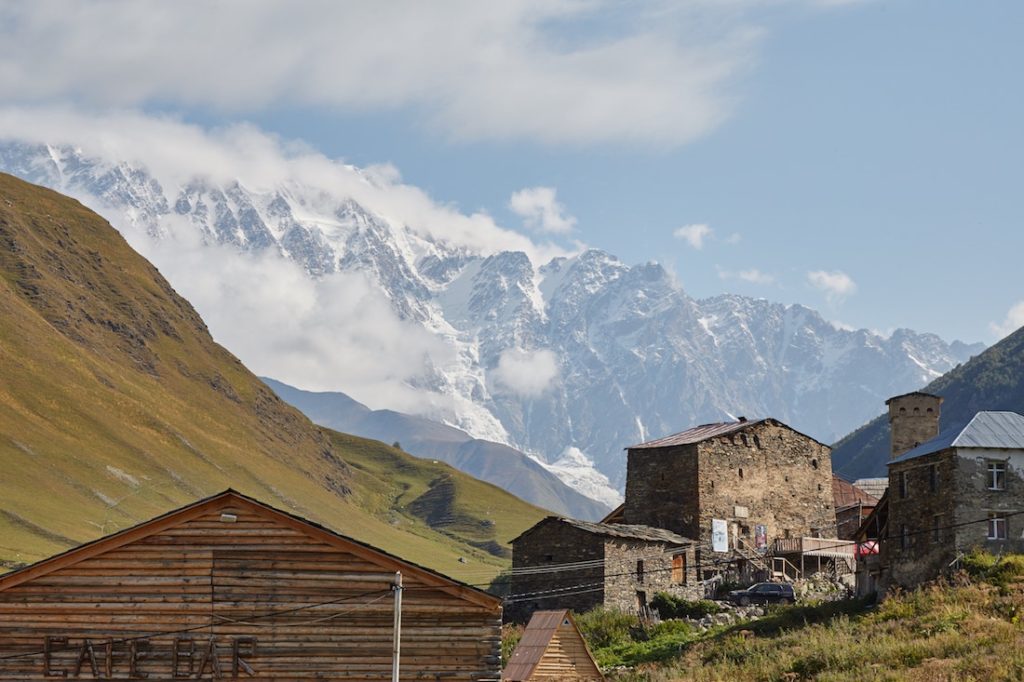
ACCOMMODATION: In Ushguli I stayed at Caucasus Guesthouse which was one of the best stays of my trip. The service was friendly and there was fast, working Wifi. For a private room (with shared bathroom) and two meals, it cost me 40 GEL for the night.
Additional Info
(Learn more about getting to Mestia from Tbilisi in Part One.)
There’s no direct transport between Ushguli and any other major city in Georgia. Therefore, you’ll just have to get back to Mestia first and then move onward from there.
If you want to get back to Tbilisi by train, you will first have to take a marshrutka (minibus) from Mestia to Zugdidi and then take a train from Zugdidi.
From Zugdidi to Tbilisi there’s a 18:15 train which arrives in the capital at 23:55 (apparently this is just a seated train). There’s also an overnight train leaving at 22:15 and arriving at 6:37.
The only place to purchase train tickets in person would be at Zugdidi station itself. However, you can easily purchase them on the Matarebeli app on your phone. If you’re hiking in summer, be sure to purchase the ticket at least a day or two in advance in case tickets sell out.
As mentioned above, I stayed the night in Ushguli. And the previous day, I’d bought a night train ticket from Zugdidi to Tbilisi which would depart the next night. So after breakfast in Ushguli, I’d need to travel from Ushguli to Mestia and from Mestia to Zugdidi just to board the sleeper train. Fortunately, things went rather smoothly, at least in terms of tickets and timing.
Despite the ride from Ushguli to Mestia only lasting a couple of hours, the local taxi mafia demands an exorbitant fee of 40 GEL. You can find them by the bridge, and they keep an eye on all other vehicles to make sure that nobody outside of their clan offers tourists a more reasonable deal.
With Georgia doing so much to promote tourism these days, this is really not a good look. While I did find another vehicle in the center of town offering 30 GEL, they told us to wait until the car filled up. But no other tourists seemed to know about the place. Even with a few other people from my hostel joining me, we probably would’ve ended up waiting for hours.
Therefore, even though we weren’t in a big rush, we just decided to use one of the guys by the bridge. Once in the car, it was hard to believe that four straight days of hiking could go by in such a short drive!
It was only early afternoon by the time we arrived in Mestia, meaning I’d have all day to get to Zugdidi. I went by the main bus stand area and was pleased to find out that it’s possible to buy marshrutka tickets in advance.
I’d read (and can now confirm) that Zugdid is not a charming place, and that it’s much better to wait out the day in Mestia. But I still bought a 16:00 marshrutka ticket just to be safe. Both in terms of timing and in the literal sense. I wouldn’t want my life to be in the hands of a marshrutka driver after dark!
As I’d already explored Mestia, I spent most of the afternoon hanging out at coffee shops and restaurants with various other hikers I’d met on the trails. And then it was time for my marshrutka to depart.
Unfortunately, some extra passengers got on at the last minute, leaving me stuck next to a rather tall man sitting on one of those seats you pull out into the middle of the aisle. As expected, the journey absolutely sucked. At one point we nearly got into an accident when a dog ran into the road and the driver was going too fast to properly brake (everyone lived, but just barely).
And there were no handles by the seats to hold onto, leaving me convinced that these vehicles are uncomfortable by design.
I was relieved to finally get some fresh air in Zugdidi, and I still had another 3 or 4 hours to kill before the train departed. I found a staircase next to the platform to sit on and mostly passed the time by reading books and drinking tea.
As mentioned in Part One, many hikers arrive in Ushguli only to immediately take a taxi to Mestia and then head to Zugdidi/Tbilisi from there. While I think it’s crazy not to explore Ushguli after spending four straight days hiking there, this is certainly doable from a timing perspective
It’s also possible to take a direct marshrutka from Mestia all the way back to Tbilisi, which is supposed to last around 10 hours. But after three hours in one during the ride to Zugdidi, I was very pleased that I opted for the overnight train.
As was the case with the ride over, the train lacked sheets and we had to sleep directly on the seat. But at least I was able to get some sleep.
There are lots of guesthouses to choose from in each village, and booking accommodation isn’t absolutely necessary. However, I decided to book accommodation in advance for each village and was glad that I did.
This allowed me to know exactly how much cash to bring for the hike. There are no ATM’s after Mestia and guesthouses won’t take cards, so it was convenient to know how much I’d spend in advance. With that said, it’s a good idea to bring enough for an extra night or two in case horrible weather happens to disrupt your hike.
Something you should be aware of is that the prices the owners quoted me wasn’t always the same as the prices listed on Booking. Sometimes it was a bit more, but sometimes it was even less! I think this has to do with confusion about the web site’s pricing options.
Another benefit of advance booking was having a place to check-in to right away. It was great being able to set down my bag at the end of each hike without having to shop around and compare the different options. Furthermore, a lot of guesthouses are run by regular families who aren’t experienced in the hospitality industry, so opinions are often mixed. That’s why I found it useful to read reviews in advance.
If you’re bringing all your stuff with you to Mestia, you’ll likely be able to leave what you don’t need at your hotel and pick it up upon your return.
BACKPACK: You’re going to be carrying your backpack for 4 days straight, so you’ll want something that’s comfortable and that won’t fall apart during the trek. Most people take typical trekking backpacks with adequate shoulder and waist support.
I, on the other hand, just took the large backpack I use for all of my trips. It’s called the Eagle Creek Gear Hauler and it’s not specially designed for long-distance trekking (though it is mostly waterproof). My shoulders suffered a bit throughout the hike, but I have no regrets about not buying a new bag. The reason I really like the Gear Hauler is that it’s been designed to fit as a carry-on bag, which is very important to me as a frequent flyer.
SHOES: Overall, the hike isn’t too extreme, and some people complete it in regular tennis shoes. Many people I met, however, complained of blisters. Also, you may want to consider getting something waterproof in case of rain or if you accidentally step in a puddle.
While I’m far from being an expert on hiking shoes, these shoes by North Face really came through for me. It was almost like walking on pillows, and I never developed a single blister. I was also hiking with two missing big toenails after my grueling Gergeti Glacier hike, but it was hardly even an issue. You can find them at the Magellan sporting goods shop in Saburtalo, Tbilisi.
RAINCOAT: A raincoat is a must. Even if it rains just once, you’ll surely need it. In case you get stuck in a downpour, also bring a dry bag for your camera and electronics.
CLOTHES: Even if you’re hiking in summer, it can get pretty cold at night and in the early morning. That’s why it’s best to bring at least a couple of long-sleeve shirts.
Also be sure to bring fresh backup clothes in case you get soaked or muddy. They might also come in handy for sleeping if your hotel lacks heat.
Don’t bring too much, though, as you’ll have to carry it all around with you for at least four days!
TREKKING POLES: This was my first time ever using trekking poles, and I was very glad that I got them. As it was also my first time trekking with such a heavy backpack, the poles really helped ease some of the pressure on my back.
Furthermore, the poles came in handy when walking down steep inclines or over small rivers.
If it’s your first time using trekking poles, I’d recommend watching some YouTube instructional videos on how to properly carry and walk with them.
The cheapest trekking poles I found in Tbilisi were at the Sports Master shop south of Vera Park. I believe I got the pair for around 80 or 90 GEL. (While the service there is good, do not buy shoes from them!) You can also probably find trekking poles in Mestia as well.
CAMERA: If you’re hoping to take lots of photos throughout your trek, think twice before bringing all your gear. Not only will extra lenses weigh you down, but it’s just not practical to stop and constantly change lenses throughout this kind of trek.
I trekked the whole time with my DSLR hanging from my neck, and I only brought my most versatile lens (24-105mm) as opposed to bringing 2 or 3 like I usually do. I feel that this was the best choice and I’d recommend other photographers do the same.
